ᬫᬦᬶᬫ᭄ᬩᬦ᭄ᬕ᭄
Game Over
| PAWUKON | Slot 1 | Slot 2 | Slot 3 | Slot 4 |
|---|---|---|---|---|
| Symbol | ||||
| Urip | ||||
| Saptawara | ||||
| Caturwara | ||||
| Pancawara | ||||
| Asatawara | ||||
| Dasawara |
| PAWUKON | Date 1 | Date 2 | Date 3 | Date 4 |
|---|---|---|---|---|
| Symbols | ||||
| Day # | ||||
| Saptawara | ||||
| Saptawara Week Name | ||||
| Gregorian Date | ||||
| Day of the Week | ||||
| Dwiwara (2) | ||||
| Triwara (3) | ||||
| Caturwara (4) | ||||
| Pancawara (5) | ||||
| Asatawara (8) | ||||
| Dasawara (10) | ||||
| German Holiday |
Pawukon Calendar Converter
Enter up to four Gregorian dates (mm/dd/yyyy)
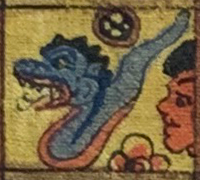
Pawukon Week 1 (Sinta) - Days 001 to 007
Week Summary
This is the first week of the Pawukon calendar, called Sinta. The symbols in this week reflect spiritual strength, protection, and rituals. Each day carries unique attributes based on the cycles of Saptawara, Pancawara, Caturwara, Asatawara, and Dasawara, focusing on elements such as fertility (Sri), victory (Jaya), and kingship (Raja).
| Day # | Calendar|Symbol | Description | Related Calendar Information |
|---|---|---|---|
| 001 | 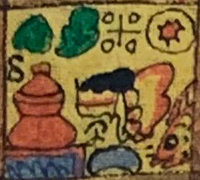 |
A central geometric figure, symbolizing a place of importance, possibly linked to spiritual rituals and strength. |
Saptawara: Redite (Sunday) Pancawara: Paing (Fierce) Caturwara: Laba (Gain) Asatawara: Ludra (God of Destruction) Dasawara: Pandita (Priest) Meaning: Positive omens, focusing on rituals for gaining spiritual strength and protection, associated with the priestly role (Pandita) and gain (Laba). Paing suggests a day of fierce intensity, adding to the focus on strength. |
| 002 | 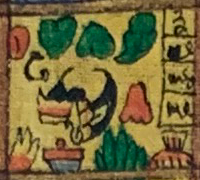 |
Curved and linear patterns, possibly indicating spiritual balance or introspection. |
Saptawara: Soma (Monday) Pancawara: Pon (Rich) Caturwara: Jaya (Victory) Asatawara: Yama (God of Justice) Dasawara: Raja (King) Meaning: A day focusing on spiritual victory and introspection, with the influence of the kingly role (Raja) and justice (Yama) guiding decisions. Pon emphasizes the richness of the day’s energies, with a focus on inner wealth. |
| 003 | 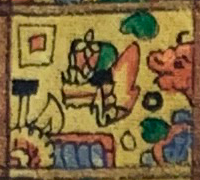 |
A strong, enclosed design suggesting protection and resilience. |
Saptawara: Anggara (Tuesday) Pancawara: Wage (Empty) Caturwara: Manuh (Follower) Asatawara: Guru (Teacher) Dasawara: Manusa (Human) Meaning: A day emphasizing personal resilience and growth, with guidance from the teacher (Guru) and human aspects (Manusa). Wage signifies an emptiness or void, creating space for reflection and renewal. |
| 004 | 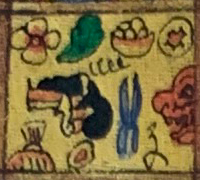 |
An open figure, possibly linked to cleansing rituals or spiritual healing. |
Saptawara: Buda (Wednesday) Pancawara: Keliwon (Holy) Caturwara: Patra (Sacred) Asatawara: Ludra (God of Destruction) Dasawara: Dewa (God) Meaning: A day of purification and spiritual reflection, strongly influenced by sacred rituals (Patra) and the presence of divine forces (Dewa). Keliwon is especially significant, being a holy day that enhances the cleansing energies. |
| 005 | 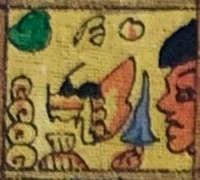 |
A symbol of an open space, likely representing communal or peaceful gatherings. |
Saptawara: Wraspati (Thursday) Pancawara: Umanis (Sweet) Caturwara: Sri (Fertility) Asatawara: Yama (God of Justice) Dasawara: Pandita (Priest) Meaning: A day focused on social harmony and gatherings, emphasizing fertility (Sri) and justice (Yama) with priestly guidance (Pandita). Umanis brings sweetness and harmony to social interactions and peaceful gatherings. |
| 006 | 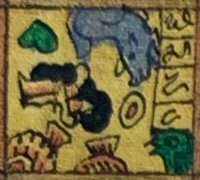 |
A structure for offerings or ceremonial purposes, indicating protection and prosperity. |
Saptawara: Sukra (Friday) Pancawara: Paing (Fierce) Caturwara: Laba (Gain) Asatawara: Guru (Teacher) Dasawara: Raja (King) Meaning: A day for rituals focused on gaining prosperity (Laba), guided by teachings (Guru) and kingly protection (Raja). The fierce energy of Paing intensifies the focus on protection and prosperity. |
| 007 | 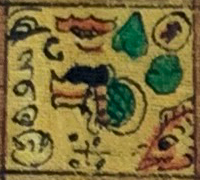 |
An enclosed figure representing completion or the closing of spiritual rituals. |
Saptawara: Saniscara (Saturday) Pancawara: Pon (Rich) Caturwara: Jaya (Victory) Asatawara: Ludra (God of Destruction) Dasawara: Manusa (Human) Meaning: A day for reflecting on spiritual victories (Jaya), balancing divine destruction (Ludra) with human elements (Manusa). Pon emphasizes richness, suggesting that the day holds valuable spiritual insights. |
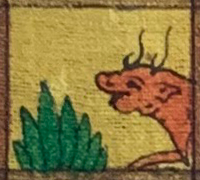
Pawukon Week 2 (Landep) - Days 008 to 014
Week Summary
Week 2 of the Pawukon calendar is known as Landep. The symbols during this week reflect sharpness, intellect, and the initiation of spiritual progress. Each day brings distinct qualities that build on the foundational principles of the first week (Sinta), with additional focus on mental clarity and decisiveness.
| Day # | Calendar|Symbol | Description | Related Calendar Information |
|---|---|---|---|
| 008 | 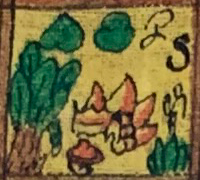 |
An angular symbol suggesting sharpness or mental clarity, likely linked to spiritual focus. |
Saptawara: Redite (Sunday) Pancawara: Wage (Empty) Caturwara: Jaya (Victory) Asatawara: Yama (God of Justice) Dasawara: Manusa (Human) Meaning: A day focused on initiating mental clarity and sharpening one's spiritual focus. Wage brings an emptiness that allows space for reflection. |
| 009 | 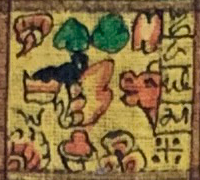 |
Curved lines indicating fluidity and decisiveness, possibly linked to intellectual or spiritual progression. |
Saptawara: Soma (Monday) Pancawara: Pon (Rich) Caturwara: Laba (Gain) Asatawara: Guru (Teacher) Dasawara: Pandita (Priest) Meaning: Focus on decisiveness and intellectual progression, with Pon's richness enhancing the themes of growth and gain (Laba). |
| 010 | 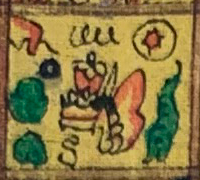 |
A triangular design, symbolizing strength and the initiation of a spiritual journey. |
Saptawara: Anggara (Tuesday) Pancawara: Paing (Fierce) Caturwara: Sri (Fertility) Asatawara: Ludra (God of Destruction) Dasawara: Raja (King) Meaning: Focus on starting spiritual journeys with strength and guidance, reinforced by the fierce energy of Paing and the nurturing force of Sri. |
| 011 | 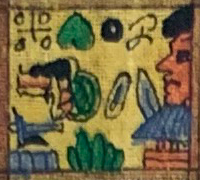 |
A vertical structure, representing spiritual ascent and the deepening of personal insight. |
Saptawara: Buda (Wednesday) Pancawara: Wage (Empty) Caturwara: Manuh (Follower) Asatawara: Guru (Teacher) Dasawara: Manusa (Human) Meaning: A day of spiritual ascent and growth, with Wage symbolizing a space for deeper personal reflection, enhanced by the teachings of Guru. |
| 012 | 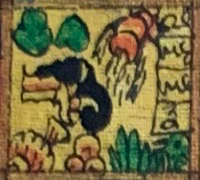 |
A sharp triangular figure, representing focus and clarity in spiritual practice. |
Saptawara: Wraspati (Thursday) Pancawara: Keliwon (Holy) Caturwara: Jaya (Victory) Asatawara: Yama (God of Justice) Dasawara: Raja (King) Meaning: A day of clarity and mental sharpness, strongly influenced by Keliwon's holy significance, with an emphasis on spiritual victory (Jaya). |
| 013 | 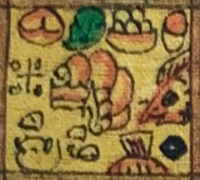 |
A sharp-edged figure, potentially representing decisive actions or significant spiritual decisions. |
Saptawara: Sukra (Friday) Pancawara: Paing (Fierce) Caturwara: Laba (Gain) Asatawara: Ludra (God of Destruction) Dasawara: Dewa (God) Meaning: Focus on taking decisive spiritual actions, with Paing's fierceness adding intensity to gain (Laba) and divine influence (Dewa). |
| 014 | 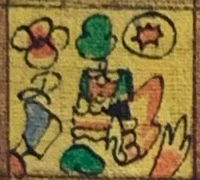 |
A symbol suggesting strength and protection, likely linked to ceremonial protection rituals. |
Saptawara: Saniscara (Saturday) Pancawara: Pon (Rich) Caturwara: Patra (Sacred) Asatawara: Guru (Teacher) Dasawara: Manusa (Human) Meaning: A day of protection and strength, with Pon's richness bringing spiritual wealth and Patra's sacredness enhancing protective rituals. |
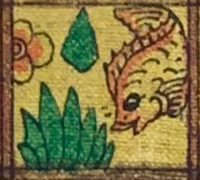
Pawukon Week 3 (Ukir) - Days 015 to 021
Week Summary
Week 3 of the Pawukon calendar, called Ukir, is marked by symbols representing creative expression and spiritual transformation. The week builds on the clarity of mind and spiritual progress from the previous week, introducing elements of craftsmanship, beauty, and deeper spiritual insights.
| Day # | Calendar|Symbol | Description | Related Calendar Information |
|---|---|---|---|
| 015 | 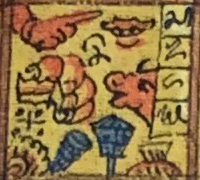 |
A symbol suggesting creative flow or transformation, possibly linked to artistic or spiritual practices. |
Saptawara: Redite (Sunday) Pancawara: Paing (Fierce) Caturwara: Sri (Fertility) Asatawara: Yama (God of Justice) Dasawara: Raja (King) Meaning: A day focusing on artistic creativity, supported by the fierce energy of Paing and the nurturing force of Sri (Fertility). |
| 016 | 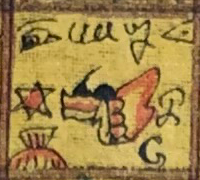 |
Curved shapes suggesting artistic transformation and spiritual growth. |
Saptawara: Soma (Monday) Pancawara: Pon (Rich) Caturwara: Laba (Gain) Asatawara: Guru (Teacher) Dasawara: Pandita (Priest) Meaning: A day for embracing spiritual growth and transformation, enriched by Pon's richness and Laba’s theme of gain. |
| 017 | 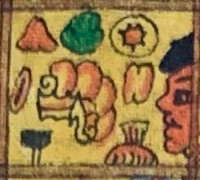 |
Decorative and flowing patterns, suggesting beauty and refinement in spiritual practices. |
Saptawara: Anggara (Tuesday) Pancawara: Wage (Empty) Caturwara: Manuh (Follower) Asatawara: Ludra (God of Destruction) Dasawara: Manusa (Human) Meaning: Focus on spiritual refinement, enhanced by the emptiness (Wage), creating space for beauty and growth. |
| 018 | 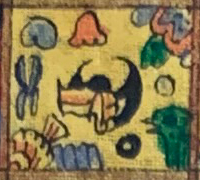 |
A geometric figure representing structure and organization in spiritual practices. |
Saptawara: Buda (Wednesday) Pancawara: Keliwon (Holy) Caturwara: Patra (Sacred) Asatawara: Guru (Teacher) Dasawara: Dewa (God) Meaning: A day to focus on spiritual structure and organization, guided by the sacred energies of Keliwon and Patra. |
| 019 | 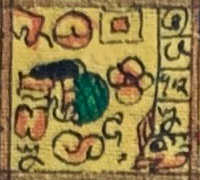 |
Elaborate, flowing designs suggesting refinement and detailed attention in spiritual practices. |
Saptawara: Wraspati (Thursday) Pancawara: Umanis (Sweet) Caturwara: Laba (Gain) Asatawara: Yama (God of Justice) Dasawara: Manusa (Human) Meaning: A day for refining spiritual practices, enriched by the sweetness (Umanis) and gain (Laba), with justice (Yama) guiding decisions. |
| 020 | 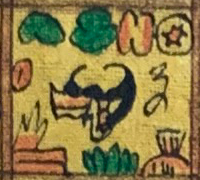 |
Spiraling patterns representing transformation and artistic inspiration. |
Saptawara: Sukra (Friday) Pancawara: Paing (Fierce) Caturwara: Sri (Fertility) Asatawara: Ludra (God of Destruction) Dasawara: Raja (King) Meaning: Focus on artistic and spiritual transformation, supported by the fierce energy of Paing and the creative force of Sri (Fertility). |
| 021 | 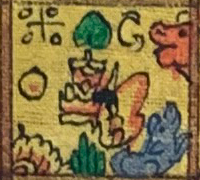 |
Flowing, wave-like symbols suggesting flexibility and adaptation in spiritual growth. |
Saptawara: Saniscara (Saturday) Pancawara: Pon (Rich) Caturwara: Jaya (Victory) Asatawara: Guru (Teacher) Dasawara: Manusa (Human) Meaning: A day for spiritual flexibility and adaptation, balancing victory (Jaya) with the richness of Pon and human guidance from Guru. |
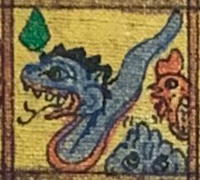
Pawukon Week 4 (Kulantir) - Days 022 to 028
Week Summary
Week 4, called Kulantir, focuses on themes of reflection and internal transformation. The symbols in this week emphasize deeper insight, spiritual awakening, and the influence of outer forces on personal growth. Each day carries unique energies based on the cycles of Saptawara, Pancawara, Caturwara, Asatawara, and Dasawara.
| Day # | Calendar|Symbol | Description | Related Calendar Information |
|---|---|---|---|
| 022 | 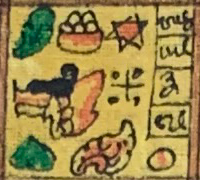 |
A circular symbol, representing cycles and continuous reflection. |
Saptawara: Redite (Sunday) Pancawara: Paing (Fierce) Caturwara: Sri (Fertility) Asatawara: Yama (God of Justice) Dasawara: Raja (King) Meaning: A day of fierce introspection and reflection, focusing on inner cycles of growth, with influences of fertility (Sri) and justice (Yama). |
| 023 | 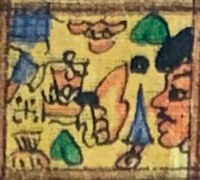 |
Angular shapes suggesting sharp transformation and decisive change. |
Saptawara: Soma (Monday) Pancawara: Pon (Rich) Caturwara: Laba (Gain) Asatawara: Guru (Teacher) Dasawara: Pandita (Priest) Meaning: A day for decisive actions and personal transformations, with richness (Pon) influencing spiritual gain and wisdom (Guru). |
| 024 | 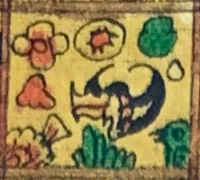 |
A spiral symbol, representing inward journeys and spiritual awakening. |
Saptawara: Anggara (Tuesday) Pancawara: Wage (Empty) Caturwara: Manuh (Follower) Asatawara: Ludra (God of Destruction) Dasawara: Manusa (Human) Meaning: Focus on spiritual journeys and introspective transformation, with the emptiness of Wage allowing for renewal and growth. |
| 025 | 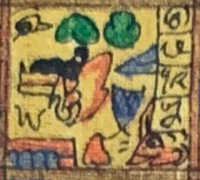 |
Flowing lines, suggesting flexibility and adaptation in spiritual practices. |
Saptawara: Buda (Wednesday) Pancawara: Keliwon (Holy) Caturwara: Patra (Sacred) Asatawara: Guru (Teacher) Dasawara: Dewa (God) Meaning: A day of spiritual flexibility and learning, enhanced by the holy energies of Keliwon and the sacred influence of Patra. |
| 026 | 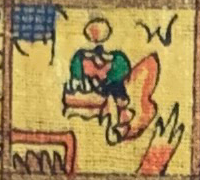 |
A sharp-edged design, symbolizing strength and protection. |
Saptawara: Wraspati (Thursday) Pancawara: Umanis (Sweet) Caturwara: Laba (Gain) Asatawara: Yama (God of Justice) Dasawara: Pandita (Priest) Meaning: A day of protection and strength, guided by the sweetness of Umanis and the balancing forces of justice (Yama). |
| 027 | 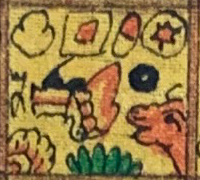 |
A geometric figure representing boundaries and self-discipline. |
Saptawara: Sukra (Friday) Pancawara: Paing (Fierce) Caturwara: Laba (Gain) Asatawara: Guru (Teacher) Dasawara: Raja (King) Meaning: A day for establishing boundaries and self-discipline, with the fierce energy of Paing adding intensity to gain (Laba) and guidance (Guru). |
| 028 | 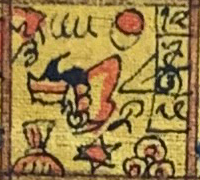 |
A closed figure, representing completion and closure in spiritual journeys. |
Saptawara: Saniscara (Saturday) Pancawara: Pon (Rich) Caturwara: Sri (Fertility) Asatawara: Ludra (God of Destruction) Dasawara: Manusa (Human) Meaning: A day for reflecting on spiritual completion and closure, with rich energies (Pon) and divine transformation (Sri). |
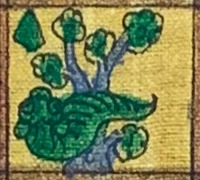
Pawukon Week 5 (Taulu) - Days 029 to 035
Week Summary
Week 5, called Taulu, is a period of balance and restoration. The symbols this week focus on harmony, both within oneself and in relationships with others. Reflection and grounding are important themes for this week.
| Day # | Calendar|Symbol | Description | Related Calendar Information |
|---|---|---|---|
| 029 | 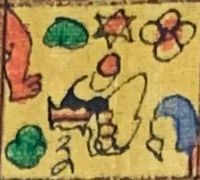 |
A circular figure, symbolizing unity and balance in all aspects of life. |
Saptawara: Redite (Sunday) Pancawara: Pon (Rich) Caturwara: Laba (Gain) Asatawara: Yama (God of Justice) Dasawara: Raja (King) Meaning: A day for reflection on harmony and balance, with richness (Pon) and justice (Yama) guiding personal relationships, and the kingly influence of Raja encouraging leadership. |
| 030 | 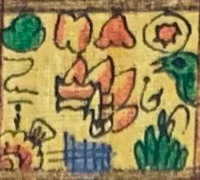 |
Curved lines indicating a period of rest and introspection. |
Saptawara: Soma (Monday) Pancawara: Wage (Empty) Caturwara: Manuh (Follower) Asatawara: Guru (Teacher) Dasawara: Pandita (Priest) Meaning: A day for introspection and personal growth, with Wage providing space for renewal, and the priestly guidance (Pandita) offering spiritual insight. |
| 031 | 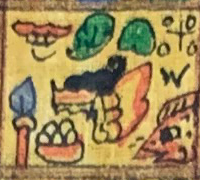 |
Angular shapes representing structured thought and stability. |
Saptawara: Anggara (Tuesday) Pancawara: Keliwon (Holy) Caturwara: Sri (Fertility) Asatawara: Ludra (God of Destruction) Dasawara: Manusa (Human) Meaning: A day of structured thought and balance, with Keliwon's holy influence enhancing rituals, Sri's fertility supporting growth, and the human aspect (Manusa) grounding the day's energy. |
| 032 | 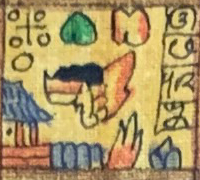 |
A flowing pattern, representing flexibility and adaptability. |
Saptawara: Buda (Wednesday) Pancawara: Paing (Fierce) Caturwara: Patra (Sacred) Asatawara: Guru (Teacher) Dasawara: Dewa (God) Meaning: A day of flexibility and adaptability, with fierce energy (Paing) driving transformation, and the sacred influence of Patra reinforcing spiritual dedication under the guidance of Dewa. |
| 033 | 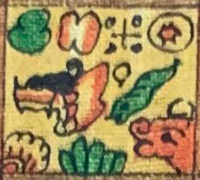 |
A solid structure indicating strength and resilience in overcoming challenges. |
Saptawara: Wraspati (Thursday) Pancawara: Umanis (Sweet) Caturwara: Laba (Gain) Asatawara: Yama (God of Justice) Dasawara: Pandita (Priest) Meaning: A day of resilience and strength, with the sweetness of Umanis encouraging personal growth, justice (Yama) maintaining balance, and Pandita offering spiritual guidance. |
| 034 | 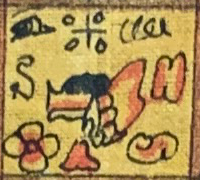 |
A circular shape symbolizing continuity and ongoing personal transformation. |
Saptawara: Sukra (Friday) Pancawara: Pon (Rich) Caturwara: Sri (Fertility) Asatawara: Ludra (God of Destruction) Dasawara: Raja (King) Meaning: A day for reflecting on personal transformation, supported by the richness (Pon), fertility (Sri), and transformative power of Ludra, with leadership qualities from Raja. |
| 035 | 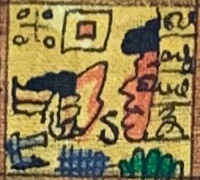 |
An enclosed structure symbolizing completion and closure of spiritual cycles. |
Saptawara: Saniscara (Saturday) Pancawara: Wage (Empty) Caturwara: Jaya (Victory) Asatawara: Guru (Teacher) Dasawara: Manusa (Human) Meaning: A day of closure and victory (Jaya), with Wage’s emptiness providing space for renewal, and human guidance (Manusa) offering practical wisdom. |
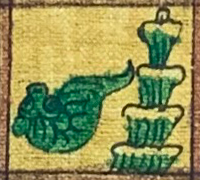
Pawukon Week 6 (Gumbreg) - Days 036 to 042
Week Summary
Week 6, called Gumbreg, focuses on rebirth and spiritual renewal. The symbols emphasize the importance of cleansing and releasing what no longer serves the individual in order to invite new growth and opportunities.
| Day # | Calendar|Symbol | Description | Related Calendar Information |
|---|---|---|---|
| 036 | 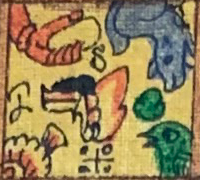 |
A circular shape indicating cycles of renewal and cleansing. |
Saptawara: Redite (Sunday) Pancawara: Paing (Fierce) Caturwara: Sri (Fertility) Asatawara: Yama (God of Justice) Dasawara: Raja (King) Meaning: A day for focusing on spiritual renewal and fertility, with fierce (Paing) energies supporting the process, and the leadership of Raja offering guidance. |
| 037 | 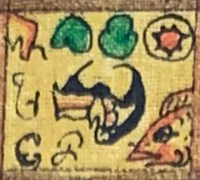 |
A spiral figure, suggesting transformation and internal growth. |
Saptawara: Soma (Monday) Pancawara: Pon (Rich) Caturwara: Laba (Gain) Asatawara: Guru (Teacher) Dasawara: Pandita (Priest) Meaning: A day of transformation and personal growth, supported by richness (Pon) and the guidance of the priestly role (Pandita). |
| 038 | 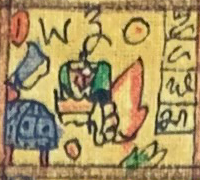 |
Flowing lines representing adaptability and flexibility. |
Saptawara: Anggara (Tuesday) Pancawara: Wage (Empty); Caturwara: Manuh (Follower) Asatawara: Ludra (God of Destruction) Dasawara: Manusa (Human) Meaning: Focus on flexibility and adaptability in spiritual practice, with Wage’s emptiness creating room for renewal and the human element (Manusa) grounding the day’s energies. |
| 039 | 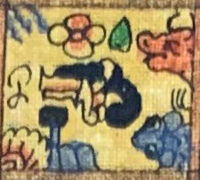 |
Angular shapes representing boundaries and self-discipline. |
Saptawara: Buda (Wednesday) Pancawara: Keliwon (Holy) Caturwara: Patra (Sacred) Asatawara: Guru (Teacher) Dasawara: Dewa (God) Meaning: A day for setting boundaries and focusing on sacred rituals, with Keliwon enhancing the holy energies and Guru guiding sacred teachings. |
| 040 | 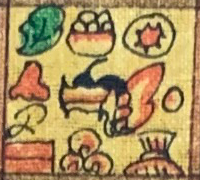 |
A solid structure representing protection and strength. |
Saptawara: Wraspati (Thursday) Pancawara: Paing (Fierce) Caturwara: Laba (Gain) Asatawara: Yama (God of Justice) Dasawara: Pandita (Priest) Meaning: A day of protection and spiritual strength, with the fierce energies of Paing encouraging resilience, and justice (Yama) maintaining balance. |
| 041 | 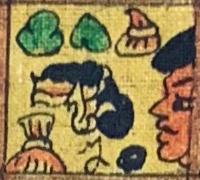 |
Elaborate flowing shapes, suggesting spiritual refinement and creativity. |
Saptawara: Sukra (Friday) Pancawara: Pon (Rich) Caturwara: Sri (Fertility) Asatawara: Ludra (God of Destruction) Dasawara: Raja (King) Meaning: A day for refining spiritual practices, with the richness (Pon) and fertility (Sri) supporting creative growth, and the leadership of Raja offering protection. |
| 042 | 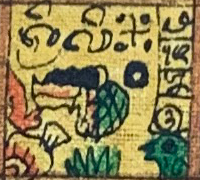 |
A closed design representing the completion of a cycle and spiritual renewal. |
Saptawara: Saniscara (Saturday) Pancawara: Wage (Empty) Caturwara: Jaya (Victory) Asatawara: Guru (Teacher) Dasawara: Manusa (Human) Meaning: A day for completing spiritual cycles, with Wage’s emptiness allowing for renewal, and the victorious energy (Jaya) guiding the day. |
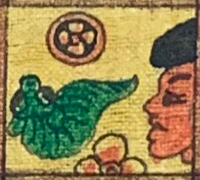
Pawukon Week 7 (Wariga) - Days 043 to 049
Week Summary
Week 7, called Wariga, brings a focus on spiritual grounding and practical wisdom. The symbols emphasize stability and consistency in personal practices, inviting reflection on how spiritual efforts impact everyday life.
| Day # | Calendar|Symbol | Description | Related Calendar Information |
|---|---|---|---|
| 043 | 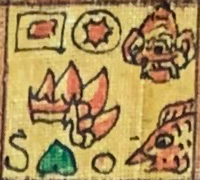 |
A circular figure representing balance and stability in spiritual practices. |
Saptawara: Redite (Sunday) Pancawara: Paing (Fierce) Caturwara: Sri (Fertility) Asatawara: Yama (God of Justice) Dasawara: Raja (King) Meaning: A day focused on balance and stability, with fierce energies (Paing) contributing to personal strength and fertility (Sri) supporting growth. |
| 044 | 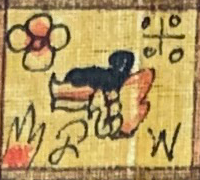 |
Angular shapes representing structured thought and grounded wisdom. |
Saptawara: Soma (Monday) Pancawara: Pon (Rich) Caturwara: Laba (Gain) Asatawara: Guru (Teacher) Dasawara: Pandita (Priest) Meaning: A day for structured thought and wisdom, supported by richness (Pon) and personal growth through teaching (Guru). |
| 045 | 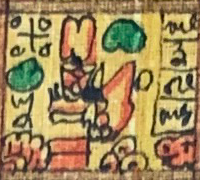 |
A flowing design indicating flexibility and spiritual adaptability. |
Saptawara: Anggara (Tuesday) Pancawara: Wage (Empty) Caturwara: Manuh (Follower) Asatawara: Ludra (God of Destruction) Dasawara: Manusa (Human) Meaning: A day for spiritual adaptability, with the emptiness of Wage allowing for flexibility in spiritual practice and reflection. |
| 046 | 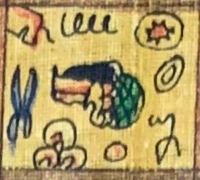 |
A solid, angular structure representing strength and personal discipline. |
Saptawara: Buda (Wednesday) Pancawara: Keliwon (Holy) Caturwara: Patra (Sacred) Asatawara: Guru (Teacher) Dasawara: Dewa (God) Meaning: A day for spiritual discipline and strength, with Keliwon’s holiness reinforcing sacred practices and Patra's sacredness. |
| 047 | 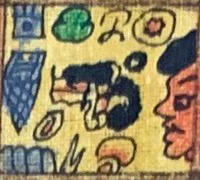 |
A circular design symbolizing continuity and ongoing spiritual growth. |
Saptawara: Wraspati (Thursday) Pancawara: Paing (Fierce) Caturwara: Laba (Gain) Asatawara: Yama (God of Justice) Dasawara: Pandita (Priest) Meaning: A day of ongoing spiritual growth, with fierce energies (Paing) contributing to personal strength and spiritual gain (Laba). |
| 048 | 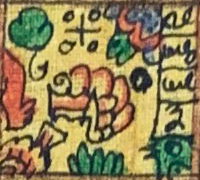 |
Flowing lines indicating fluidity and adaptability in spiritual practice. |
Saptawara: Sukra (Friday) Pancawara: Pon (Rich) Caturwara: Sri (Fertility) Asatawara: Ludra (God of Destruction) Dasawara: Raja (King) Meaning: A day for fluidity and flexibility, with rich energies (Pon) supporting fertility and Ludra bringing transformative power. |
| 049 | 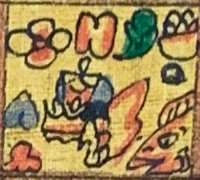 |
An enclosed structure representing spiritual completion and closure of cycles. |
Saptawara: Saniscara (Saturday) Pancawara: Wage (Empty) Caturwara: Jaya (Victory) Asatawara: Guru (Teacher) Dasawara: Manusa (Human) Meaning: A day of closure and victory (Jaya), with the emptiness (Wage) creating space for spiritual renewal and learning. |
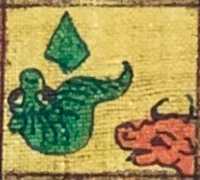
Pawukon Week 8 (Warigadian) - Days 050 to 056
Week Summary
Week 8, called Warigadian, emphasizes spiritual reflection, grounding, and internal balance. The symbols in this week suggest growth through discipline and understanding, encouraging self-awareness in one's practices.
| Day # | Calendar|Symbol | Description | Related Calendar Information |
|---|---|---|---|
| 050 | 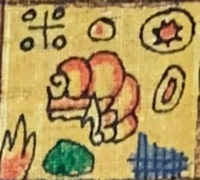 |
A circular shape symbolizing continuity and inner harmony. |
Saptawara: Redite (Sunday) Pancawara: Paing (Fierce) Caturwara: Sri (Fertility) Asatawara: Yama (God of Justice) Dasawara: Raja (King) Meaning: A day of balance and harmony, supported by fierce energies (Paing) for personal strength and leadership (Raja). |
| 051 | 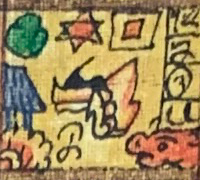 |
Sharp lines representing focus and inner discipline. |
Saptawara: Soma (Monday) Pancawara: Pon (Rich) Caturwara: Laba (Gain) Asatawara: Guru (Teacher) Dasawara: Pandita (Priest) Meaning: A day for focusing on inner discipline and spiritual gain, with richness (Pon) fostering personal growth and guidance from Pandita. |
| 052 | 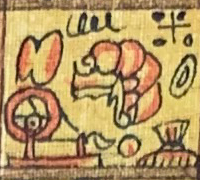 |
Flowing shapes suggesting adaptability and flexibility in practices. |
Saptawara: Anggara (Tuesday) Pancawara: Wage (Empty) Caturwara: Manuh (Follower) Asatawara: Ludra (God of Destruction) Dasawara: Manusa (Human) Meaning: A day for flexibility and adaptability, with Wage’s emptiness creating space for renewal and the human element grounding the energies. |
| 053 | 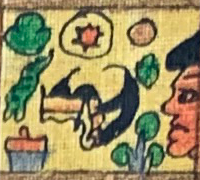 |
Solid forms representing structure and spiritual grounding. |
Saptawara: Buda (Wednesday) Pancawara: Keliwon (Holy) Caturwara: Patra (Sacred) Asatawara: Guru (Teacher) Dasawara: Dewa (God) Meaning: A day for grounding in spiritual practices, with Keliwon’s holy influence enhancing the sacredness (Patra) of the day and the guidance of Guru. |
| 054 | 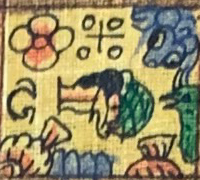 |
A circular design indicating continuity and ongoing spiritual growth. |
Saptawara: Wraspati (Thursday) Pancawara: Paing (Fierce) Caturwara: Laba (Gain) Asatawara: Yama (God of Justice) Dasawara: Pandita (Priest) Meaning: A day for ongoing spiritual growth and renewal, supported by fierce energies (Paing) and the guidance of justice (Yama) and wisdom from Pandita. |
| 055 | 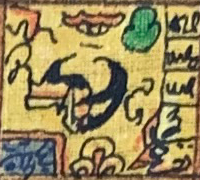 |
Flowing lines indicating fluidity and adaptability in spiritual practice. |
Saptawara: Sukra (Friday) Pancawara: Pon (Rich) Caturwara: Sri (Fertility) Asatawara: Ludra (God of Destruction) Dasawara: Raja (King) Meaning: A day for fluidity and adaptability, with richness (Pon) supporting fertility, and Ludra’s transformative energies guiding spiritual growth. |
| 056 | 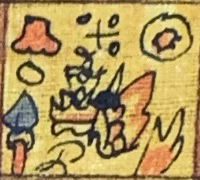 |
A closed form representing completion and spiritual renewal. |
Saptawara: Saniscara (Saturday) Pancawara: Wage (Empty) Caturwara: Jaya (Victory) Asatawara: Guru (Teacher) Dasawara: Manusa (Human) Meaning: A day for completing spiritual cycles, with Wage’s emptiness fostering renewal and the victory (Jaya) guiding the day's energies. |

Pawukon Week 9 (Julungwangi) - Days 057 to 063
Week Summary
Week 9, called Julungwangi, focuses on transformation and inner reflection. The symbols highlight the need for spiritual awareness, encouraging a focus on personal growth and adaptation through change.
| Day # | Calendar|Symbol | Description | Related Calendar Information |
|---|---|---|---|
| 057 | 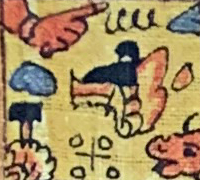 |
A circular figure indicating inner transformation and spiritual growth. |
Saptawara: Redite (Sunday) Pancawara: Paing (Fierce) Caturwara: Sri (Fertility) Asatawara: Yama (God of Justice) Dasawara: Raja (King) Meaning: A day focused on inner transformation, with fierce energies (Paing) supporting spiritual growth and leadership (Raja) guiding the path. |
| 058 | 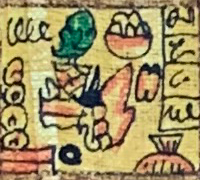 |
Angular lines representing discipline and spiritual insight. |
Saptawara: Soma (Monday) Pancawara: Pon (Rich) Caturwara: Laba (Gain) Asatawara: Guru (Teacher) Dasawara: Pandita (Priest) Meaning: A day for focusing on spiritual discipline and insight, with richness (Pon) supporting personal gain and the guidance of Pandita. |
| 059 | 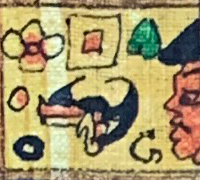 |
Flowing shapes suggesting adaptability and fluidity in spiritual practices. |
Saptawara: Anggara (Tuesday) Pancawara: Wage (Empty) Caturwara: Manuh (Follower) Asatawara: Ludra (God of Destruction) Dasawara: Manusa (Human) Meaning: A day of flexibility and adaptability, with the emptiness of Wage creating space for spiritual renewal and human insight. |
| 060 | 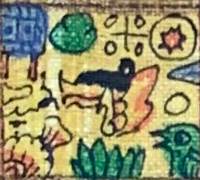 |
Solid structures indicating strength and grounded spiritual practices. |
Saptawara: Buda (Wednesday) Pancawara: Keliwon (Holy) Caturwara: Patra (Sacred) Asatawara: Guru (Teacher) Dasawara: Dewa (God) Meaning: A day for focusing on strength in spiritual practices, with Keliwon’s holiness enhancing sacred rituals and guidance from the teacher (Guru). |
| 061 | 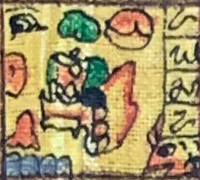 |
A circular pattern suggesting spiritual continuity and growth. |
Saptawara: Wraspati (Thursday) Pancawara: Paing (Fierce) Caturwara: Laba (Gain) Asatawara: Yama (God of Justice) Dasawara: Pandita (Priest) Meaning: A day for ongoing spiritual growth, with fierce energies (Paing) encouraging strength and justice (Yama) supporting balance. |
| 062 | 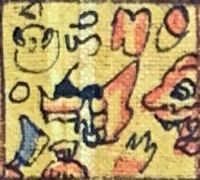 |
Flowing lines representing fluidity and transformation in spiritual practices. |
Saptawara: Sukra (Friday) Pancawara: Pon (Rich) Caturwara: Sri (Fertility) Asatawara: Ludra (God of Destruction) Dasawara: Raja (King) Meaning: A day for fluidity in spiritual practices, supported by the richness (Pon) of fertility and the transformative power of Ludra. |
| 063 | 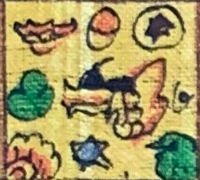 |
A closed design representing completion of spiritual cycles and renewal. |
Saptawara: Saniscara (Saturday) Pancawara: Wage (Empty) Caturwara: Jaya (Victory) Asatawara: Guru (Teacher) Dasawara: Manusa (Human) Meaning: A day for completing spiritual cycles, with Wage’s emptiness fostering renewal and victory (Jaya) guiding the day’s energies. |
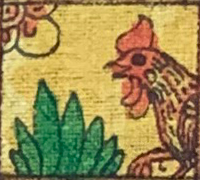
Pawukon Week 10 (Sungsang) - Days 064 to 070
Week Summary
Week 10, called Sungsang, is a time of preparation and transformation. The symbols in this week reflect the importance of readiness for spiritual change and personal growth, inviting individuals to reflect on their path forward.
| Day # | Calendar|Symbol | Description | Related Calendar Information |
|---|---|---|---|
| 064 | 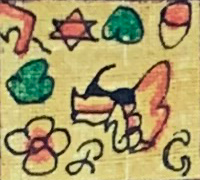 |
A circular figure representing cycles of preparation and growth. |
Saptawara: Redite (Sunday) Pancawara: Paing (Fierce) Caturwara: Sri (Fertility) Asatawara: Yama (God of Justice) Dasawara: Raja (King) Meaning: A day for preparing for growth, supported by the fierce energy of Paing and the leadership of Raja guiding personal development. |
| 065 | 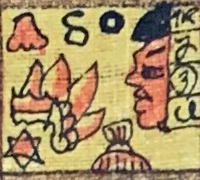 |
Sharp lines indicating spiritual readiness and discipline. |
Saptawara: Soma (Monday) Pancawara: Pon (Rich) Caturwara: Laba (Gain) Asatawara: Guru (Teacher) Dasawara: Pandita (Priest) Meaning: A day for cultivating readiness and spiritual discipline, with richness (Pon) supporting growth and guidance from Pandita. |
| 066 | 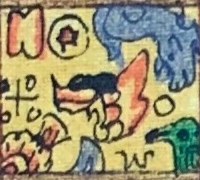 |
Flowing shapes suggesting adaptability and readiness for transformation. |
Saptawara: Anggara (Tuesday) Pancawara: Wage (Empty) Caturwara: Manuh (Follower) Asatawara: Ludra (God of Destruction) Dasawara: Manusa (Human) Meaning: A day for flexibility and readiness for transformation, with Wage’s emptiness allowing space for spiritual renewal. |
| 067 | 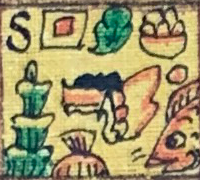 |
Angular shapes representing boundaries and spiritual strength. |
Saptawara: Buda (Wednesday) Pancawara: Keliwon (Holy) Caturwara: Patra (Sacred) Asatawara: Guru (Teacher) Dasawara: Dewa (God) Meaning: A day for grounding spiritual strength, with Keliwon’s holiness enhancing rituals and Patra's sacredness guiding spiritual practices. |
| 068 | 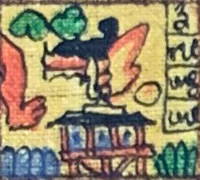 |
A flowing pattern representing flexibility and adaptability. |
Saptawara: Wraspati (Thursday) Pancawara: Paing (Fierce) Caturwara: Laba (Gain) Asatawara: Yama (God of Justice) Dasawara: Pandita (Priest) Meaning: A day for adaptability in spiritual practices, with Paing’s fierce energy driving personal gain (Laba) and justice (Yama) maintaining balance. |
| 069 | 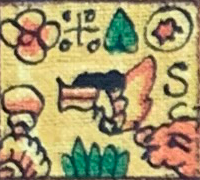 |
Flowing lines suggesting spiritual renewal and flexibility. |
Saptawara: Sukra (Friday) Pancawara: Pon (Rich) Caturwara: Sri (Fertility) Asatawara: Ludra (God of Destruction) Dasawara: Raja (King) Meaning: A day for spiritual renewal and adaptability, supported by richness (Pon) and transformative energy (Ludra). |
| 070 | 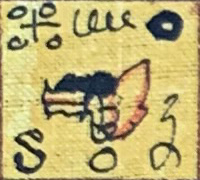 |
A closed design representing completion of spiritual cycles and renewal. |
Saptawara: Saniscara (Saturday) Pancawara: Wage (Empty) Caturwara: Jaya (Victory) Asatawara: Guru (Teacher) Dasawara: Manusa (Human) Meaning: A day for completing spiritual cycles and achieving victory (Jaya), with Wage’s emptiness providing space for spiritual renewal. |
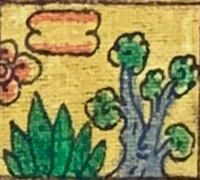
Pawukon Week 11 (Dunggulan) - Days 071 to 077
Week Summary
Week 11, called Dunggulan, is focused on victory, renewal, and new beginnings. The symbols of this week emphasize the need for self-reflection and preparation for future achievements, inviting one to move forward with confidence.
| Day # | Calendar|Symbol | Description | Related Calendar Information |
|---|---|---|---|
| 071 | 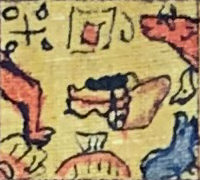 |
A circular shape representing cycles of victory and renewal. |
Saptawara: Redite (Sunday) Pancawara: Paing (Fierce) Caturwara: Sri (Fertility) Asatawara: Yama (God of Justice) Dasawara: Raja (King) Meaning: A day of victory and renewal, with fierce energies (Paing) and the leadership of Raja fostering personal growth and development. |
| 072 | 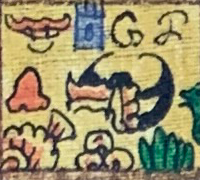 |
Sharp lines indicating spiritual discipline and preparation for success. |
Saptawara: Soma (Monday) Pancawara: Pon (Rich) Caturwara: Laba (Gain) Asatawara: Guru (Teacher) Dasawara: Pandita (Priest) Meaning: A day for cultivating discipline and readiness, with richness (Pon) fostering success and Pandita offering spiritual guidance. |
| 073 | 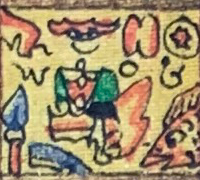 |
Flowing shapes suggesting adaptability and spiritual growth. |
Saptawara: Anggara (Tuesday) Pancawara: Wage (Empty) Caturwara: Manuh (Follower) Asatawara: Ludra (God of Destruction) Dasawara: Manusa (Human) Meaning: A day for spiritual growth and flexibility, with Wage’s emptiness allowing space for renewal and human wisdom guiding the path. |
| 074 | 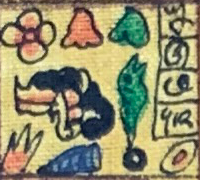 |
Solid structures indicating readiness for transformation and victory. |
Saptawara: Buda (Wednesday) Pancawara: Keliwon (Holy) Caturwara: Patra (Sacred) Asatawara: Guru (Teacher) Dasawara: Dewa (God) Meaning: A day for preparing for victory, with Keliwon’s holy influence enhancing sacred rituals and Patra’s guidance supporting transformation. |
| 075 | 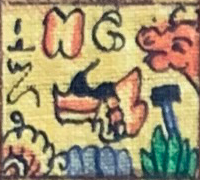 |
Flowing lines representing fluidity and adaptability in spiritual practices. |
Saptawara: Wraspati (Thursday) Pancawara: Paing (Fierce) Caturwara: Laba (Gain) Asatawara: Yama (God of Justice) Dasawara: Pandita (Priest) Meaning: A day for adaptability and flexibility, with Paing’s fierce energy supporting personal growth and justice (Yama) guiding balance. |
| 076 | 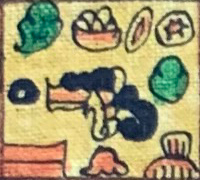 |
Flowing shapes suggesting renewal and flexibility in spiritual practices. |
Saptawara: Sukra (Friday) Pancawara: Pon (Rich) Caturwara: Sri (Fertility) Asatawara: Ludra (God of Destruction) Dasawara: Raja (King) Meaning: A day for renewal and fluidity, supported by the richness (Pon) of fertility and Ludra’s transformative energy guiding spiritual growth. |
| 077 | 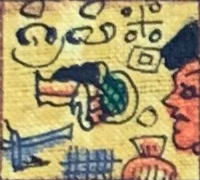 |
A closed design representing the completion of cycles and victory. |
Saptawara: Saniscara (Saturday) Pancawara: Wage (Empty) Caturwara: Jaya (Victory) Asatawara: Guru (Teacher) Dasawara: Manusa (Human) Meaning: A day for completing cycles and achieving victory (Jaya), with Wage’s emptiness providing space for spiritual renewal. |
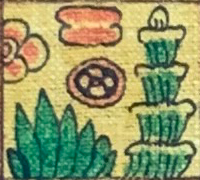
Pawukon Week 12 (Kuningan) - Days 078 to 084
Week Summary
Week 12, called Kuningan, is marked by spiritual reflection and peace. The symbols of this week invite an inward focus, asking individuals to seek tranquility and balance within themselves while preparing for new opportunities.
| Day # | Calendar|Symbol | Description | Related Calendar Information |
|---|---|---|---|
| 078 | 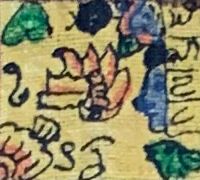 |
A circular shape representing cycles of peace and reflection. |
Saptawara: Redite (Sunday) Pancawara: Paing (Fierce) Caturwara: Sri (Fertility) Asatawara: Yama (God of Justice) Dasawara: Raja (King) Meaning: A day for inner peace and reflection, supported by the fierce energy of Paing and the leadership of Raja guiding personal balance. |
| 079 | 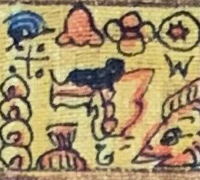 |
Sharp lines indicating spiritual clarity and insight. |
Saptawara: Soma (Monday) Pancawara: Pon (Rich) Caturwara: Laba (Gain) Asatawara: Guru (Teacher) Dasawara: Pandita (Priest) Meaning: A day for cultivating spiritual clarity and insight, with richness (Pon) supporting personal gain and Pandita offering spiritual wisdom. |
| 080 |  |
Flowing shapes suggesting adaptability and spiritual calm. |
Saptawara: Anggara (Tuesday) Pancawara: Wage (Empty) Caturwara: Manuh (Follower) Asatawara: Ludra (God of Destruction) Dasawara: Manusa (Human) Meaning: A day for spiritual calm and adaptability, with Wage’s emptiness allowing space for inner peace and reflection. |
| 081 | 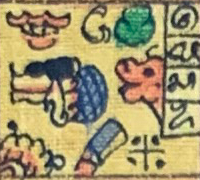 |
Solid structures indicating strength and inner tranquility. |
Saptawara: Buda (Wednesday) Pancawara: Keliwon (Holy) Caturwara: Patra (Sacred) Asatawara: Guru (Teacher) Dasawara: Dewa (God) Meaning: A day for inner strength and tranquility, with Keliwon’s holy influence enhancing sacred rituals and Patra’s guidance supporting balance. |
| 082 | 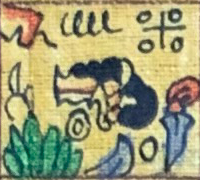 |
A flowing pattern representing spiritual peace and adaptability. |
Saptawara: Wraspati (Thursday) Pancawara: Paing (Fierce) Caturwara: Laba (Gain) Asatawara: Yama (God of Justice) Dasawara: Pandita (Priest) Meaning: A day for spiritual peace and adaptability, with Paing’s fierce energy supporting inner balance and justice (Yama) guiding personal wisdom. |
| 083 | 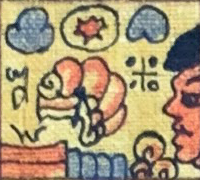 |
Flowing lines suggesting spiritual reflection and renewal. |
Saptawara: Sukra (Friday) Pancawara: Pon (Rich) Caturwara: Sri (Fertility) Asatawara: Ludra (God of Destruction) Dasawara: Raja (King) Meaning: A day for reflection and renewal, supported by the richness (Pon) of fertility and Ludra’s transformative energy guiding spiritual growth. |
| 084 | 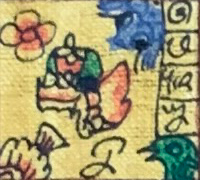 |
A closed design representing the completion of spiritual cycles and inner peace. |
Saptawara: Saniscara (Saturday) Pancawara: Wage (Empty) Caturwara: Jaya (Victory) Asatawara: Guru (Teacher) Dasawara: Manusa (Human) Meaning: A day for completing cycles and achieving inner peace, with Wage’s emptiness providing space for renewal and victory (Jaya) guiding spiritual reflection. |
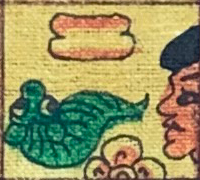
Pawukon Week 13 (Langkir) - Days 085 to 091
Week Summary
Week 13, called Langkir, focuses on spiritual discipline and inner strength. The symbols of this week emphasize the importance of personal reflection and the cultivation of resilience in the face of challenges.
| Day # | Calendar|Symbol | Description | Related Calendar Information |
|---|---|---|---|
| 085 | 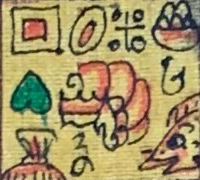 |
A circular shape representing cycles of discipline and growth. |
Saptawara: Redite (Sunday) Pancawara: Paing (Fierce) Caturwara: Sri (Fertility) Asatawara: Yama (God of Justice) Dasawara: Raja (King) Meaning: A day for cultivating inner discipline, supported by the fierce energy of Paing and the leadership of Raja guiding personal growth. |
| 086 | 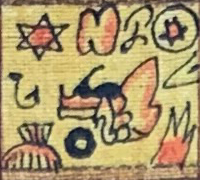 |
Sharp lines representing spiritual strength and clarity. |
Saptawara: Soma (Monday) Pancawara: Pon (Rich) Caturwara: Laba (Gain) Asatawara: Guru (Teacher) Dasawara: Pandita (Priest) Meaning: A day for cultivating spiritual strength and clarity, with richness (Pon) supporting personal success and Pandita offering wisdom. |
| 087 | 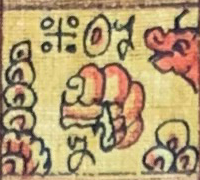 |
Flowing shapes suggesting adaptability and inner resilience. |
Saptawara: Anggara (Tuesday) Pancawara: Wage (Empty) Caturwara: Manuh (Follower) Asatawara: Ludra (God of Destruction) Dasawara: Manusa (Human) Meaning: A day for flexibility and resilience, with Wage’s emptiness creating space for renewal and the human spirit grounding the energies. |
| 088 | 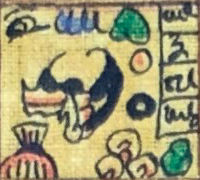 |
Solid structures representing spiritual strength and grounding. |
Saptawara: Buda (Wednesday) Pancawara: Keliwon (Holy) Caturwara: Patra (Sacred) Asatawara: Guru (Teacher) Dasawara: Dewa (God) Meaning: A day for grounding spiritual practices, with Keliwon’s holiness enhancing rituals and Patra’s sacred energy guiding balance. |
| 089 | 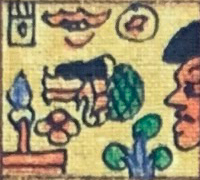 |
Flowing patterns representing flexibility and adaptability. |
Saptawara: Wraspati (Thursday) Pancawara: Paing (Fierce) Caturwara: Laba (Gain) Asatawara: Yama (God of Justice) Dasawara: Pandita (Priest) Meaning: A day for adaptability in spiritual practices, with Paing’s fierce energy driving personal growth and justice (Yama) ensuring balance. |
| 090 | 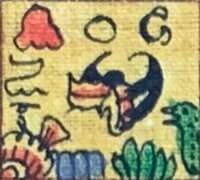 |
Flowing lines indicating flexibility and spiritual renewal. |
Saptawara: Sukra (Friday) Pancawara: Pon (Rich) Caturwara: Sri (Fertility) Asatawara: Ludra (God of Destruction) Dasawara: Raja (King) Meaning: A day for spiritual renewal and adaptability, supported by the richness (Pon) of fertility and the transformative energy of Ludra. |
| 091 | 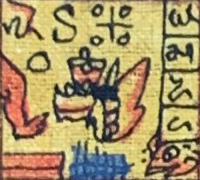 |
A closed design representing the completion of cycles and renewal. |
Saptawara: Saniscara (Saturday) Pancawara: Wage (Empty) Caturwara: Jaya (Victory) Asatawara: Guru (Teacher) Dasawara: Manusa (Human) Meaning: A day for completing spiritual cycles, with Wage’s emptiness fostering renewal and Jaya’s victory energy guiding balance. |
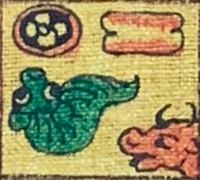
Pawukon Week 14 (Medangsia) - Days 092 to 098
Week Summary
Week 14, called Medangsia, focuses on renewal and spiritual growth. The symbols of this week invite reflection on personal development and the importance of inner balance to cultivate strength and clarity.
| Day # | Calendar|Symbol | Description | Related Calendar Information |
|---|---|---|---|
| 092 | 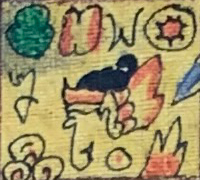 |
A circular shape representing cycles of renewal and spiritual growth. |
Saptawara: Redite (Sunday) Pancawara: Paing (Fierce) Caturwara: Sri (Fertility) Asatawara: Yama (God of Justice) Dasawara: Raja (King) Meaning: A day for inner renewal, supported by the fierce energy of Paing and the leadership of Raja guiding personal growth. |
| 093 | 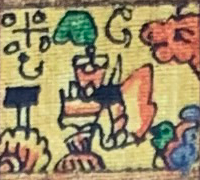 |
Sharp lines indicating spiritual clarity and strength. |
Saptawara: Soma (Monday) Pancawara: Pon (Rich) Caturwara: Laba (Gain) Asatawara: Guru (Teacher) Dasawara: Pandita (Priest) Meaning: A day for cultivating clarity and inner strength, with richness (Pon) fostering personal growth and Pandita offering wisdom. |
| 094 | 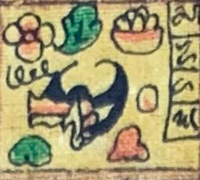 |
Flowing shapes suggesting adaptability and personal growth. |
Saptawara: Anggara (Tuesday) Pancawara: Wage (Empty) Caturwara: Manuh (Follower) Asatawara: Ludra (God of Destruction) Dasawara: Manusa (Human) Meaning: A day for adaptability and growth, with Wage’s emptiness allowing space for spiritual renewal and grounding from human wisdom. |
| 095 | 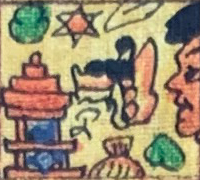 |
Solid forms representing spiritual grounding and inner strength. |
Saptawara: Buda (Wednesday) Pancawara: Keliwon (Holy) Caturwara: Patra (Sacred) Asatawara: Guru (Teacher) Dasawara: Dewa (God) Meaning: A day for grounding spiritual practices, with Keliwon’s holy influence enhancing rituals and Patra’s sacred guidance. |
| 096 | 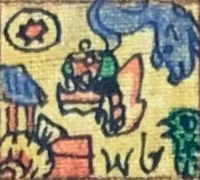 |
Flowing patterns representing adaptability and flexibility in spiritual practices. |
Saptawara: Wraspati (Thursday) Pancawara: Paing (Fierce) Caturwara: Laba (Gain) Asatawara: Yama (God of Justice) Dasawara: Pandita (Priest) Meaning: A day for adaptability in spiritual practices, with Paing’s fierce energy driving personal growth and balance. |
| 097 | 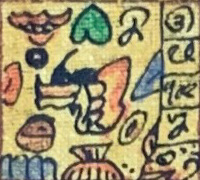 |
Flowing lines representing flexibility and spiritual renewal. |
Saptawara: Sukra (Friday) Pancawara: Pon (Rich) Caturwara: Sri (Fertility) Asatawara: Ludra (God of Destruction) Dasawara: Raja (King) Meaning: A day for spiritual renewal and adaptability, supported by the richness (Pon) of fertility and Ludra’s transformative energy guiding balance. |
| 098 | 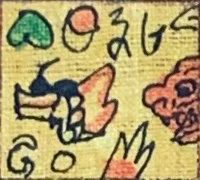 |
A closed design representing the completion of cycles and renewal. |
Saptawara: Saniscara (Saturday) Pancawara: Wage (Empty) Caturwara: Jaya (Victory) Asatawara: Guru (Teacher) Dasawara: Manusa (Human) Meaning: A day for completing spiritual cycles and fostering renewal, with Wage’s emptiness creating space for victory and balance. |
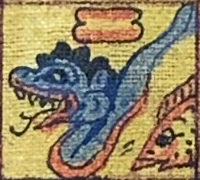
Pawukon Week 15 (Pujut) - Days 099 to 105
Week Summary
Week 15, called Pujut, represents a period of contemplation and reflection. The symbols during this week highlight the importance of understanding one's path and making adjustments to achieve inner peace and spiritual clarity.
| Day # | Calendar|Symbol | Description | Related Calendar Information |
|---|---|---|---|
| 099 | 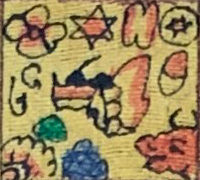 |
A circular shape representing cycles of contemplation and reflection. |
Saptawara: Redite (Sunday) Pancawara: Paing (Fierce) Caturwara: Sri (Fertility) Asatawara: Yama (God of Justice) Dasawara: Raja (King) Meaning: A day for reflection and renewal, supported by the fierce energy of Paing and the leadership of Raja guiding inner balance. |
| 100 | 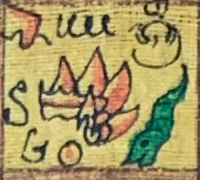 |
Sharp lines representing spiritual clarity and decision-making. |
Saptawara: Soma (Monday) Pancawara: Pon (Rich) Caturwara: Laba (Gain) Asatawara: Guru (Teacher) Dasawara: Pandita (Priest) Meaning: A day for cultivating clarity and making decisions, with richness (Pon) supporting personal success and Pandita guiding the way. |
| 101 | 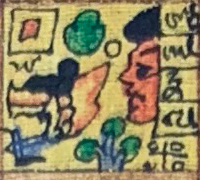 |
Flowing shapes suggesting adaptability and spiritual balance. |
Saptawara: Anggara (Tuesday) Pancawara: Wage (Empty) Caturwara: Manuh (Follower) Asatawara: Ludra (God of Destruction) Dasawara: Manusa (Human) Meaning: A day for adaptability and spiritual balance, with Wage’s emptiness providing space for reflection and human wisdom guiding the energies. |
| 102 | 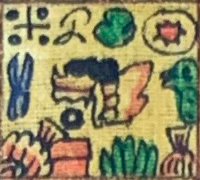 |
Solid forms indicating spiritual grounding and clarity. |
Saptawara: Buda (Wednesday) Pancawara: Keliwon (Holy) Caturwara: Patra (Sacred) Asatawara: Guru (Teacher) Dasawara: Dewa (God) Meaning: A day for spiritual grounding and clarity, with Keliwon’s holy influence enhancing rituals and Patra’s sacred energy fostering balance. |
| 103 | 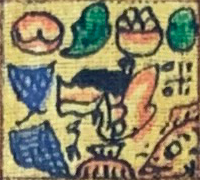 |
Flowing patterns representing flexibility and adaptability. |
Saptawara: Wraspati (Thursday) Pancawara: Paing (Fierce) Caturwara: Laba (Gain) Asatawara: Yama (God of Justice) Dasawara: Pandita (Priest) Meaning: A day for adaptability in spiritual practices, with Paing’s fierce energy driving personal growth and Yama ensuring balance. |
| 104 | 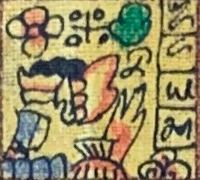 |
Flowing lines suggesting spiritual reflection and renewal. |
Saptawara: Sukra (Friday) Pancawara: Pon (Rich) Caturwara: Sri (Fertility) Asatawara: Ludra (God of Destruction) Dasawara: Raja (King) Meaning: A day for reflection and renewal, supported by the richness (Pon) of fertility and Ludra’s transformative energy. |
| 105 | 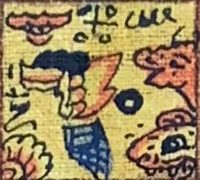 |
A closed design representing the completion of spiritual cycles and reflection. |
Saptawara: Saniscara (Saturday) Pancawara: Wage (Empty) Caturwara: Jaya (Victory) Asatawara: Guru (Teacher) Dasawara: Manusa (Human) Meaning: A day for completing spiritual cycles and fostering renewal, with Wage’s emptiness providing space for reflection and victory (Jaya) guiding spiritual growth. |
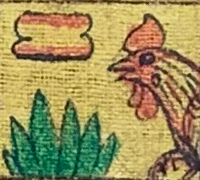
Pawukon Week 16 (Pahang) - Days 106 to 112
Week Summary
Week 16, called Pahang, is a time for cultivating inner strength and resilience. The symbols of this week encourage personal growth through introspection and understanding of life's cycles and challenges.
| Day # | Calendar|Symbol | Description | Related Calendar Information |
|---|---|---|---|
| 106 | 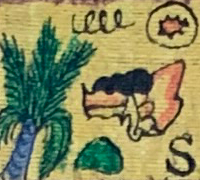 |
A circular shape representing cycles of inner strength and personal growth. |
Saptawara: Redite (Sunday) Pancawara: Paing (Fierce) Caturwara: Sri (Fertility) Asatawara: Yama (God of Justice) Dasawara: Raja (King) Meaning: A day for cultivating inner strength, supported by the fierce energy of Paing and the leadership of Raja guiding personal growth. |
| 107 | 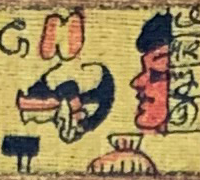 |
Sharp lines representing clarity and resilience in the face of challenges. |
Saptawara: Soma (Monday) Pancawara: Pon (Rich) Caturwara: Laba (Gain) Asatawara: Guru (Teacher) Dasawara: Pandita (Priest) Meaning: A day for cultivating clarity and resilience, with richness (Pon) supporting personal development and Pandita offering spiritual wisdom. |
| 108 | 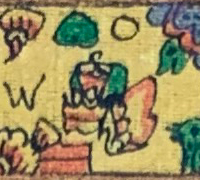 |
Flowing shapes suggesting adaptability and personal growth. |
Saptawara: Anggara (Tuesday) Pancawara: Wage (Empty) Caturwara: Manuh (Follower) Asatawara: Ludra (God of Destruction) Dasawara: Manusa (Human) Meaning: A day for adaptability and personal growth, with Wage’s emptiness providing space for reflection and renewal. |
| 109 | 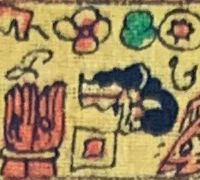 |
Solid forms indicating grounding and spiritual resilience. |
Saptawara: Buda (Wednesday) Pancawara: Keliwon (Holy) Caturwara: Patra (Sacred) Asatawara: Guru (Teacher) Dasawara: Dewa (God) Meaning: A day for grounding spiritual practices, with Keliwon’s holy influence guiding resilience and balance in daily rituals. |
| 110 | 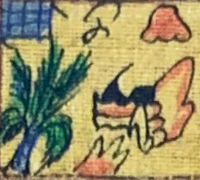 |
Flowing lines representing flexibility and spiritual growth. |
Saptawara: Wraspati (Thursday) Pancawara: Paing (Fierce) Caturwara: Laba (Gain) Asatawara: Yama (God of Justice) Dasawara: Pandita (Priest) Meaning: A day for spiritual growth and adaptability, with Paing’s fierce energy supporting personal gain and justice (Yama) guiding balance. |
| 111 | 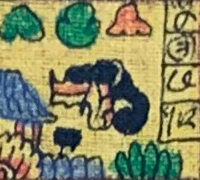 |
Flowing patterns representing adaptability and resilience in spiritual practices. |
Saptawara: Sukra (Friday) Pancawara: Pon (Rich) Caturwara: Sri (Fertility) Asatawara: Ludra (God of Destruction) Dasawara: Raja (King) Meaning: A day for resilience and adaptability, supported by richness (Pon) and Ludra’s transformative energy guiding personal growth. |
| 112 | 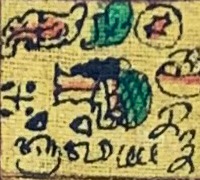 |
A closed design representing the completion of cycles and inner strength. |
Saptawara: Saniscara (Saturday) Pancawara: Wage (Empty) Caturwara: Jaya (Victory) Asatawara: Guru (Teacher) Dasawara: Manusa (Human) Meaning: A day for completing spiritual cycles, with Wage’s emptiness fostering reflection and Jaya’s victory guiding inner strength. |
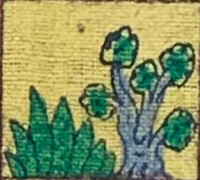
Pawukon Week 17 (Krulut) - Days 113 to 119
Week Summary
Week 17, called Krulut, centers on emotional balance and the cultivation of patience. The symbols of this week emphasize the importance of self-reflection and managing personal emotions to create inner peace and harmony.
| Day # | Calendar|Symbol | Description | Related Calendar Information |
|---|---|---|---|
| 113 | 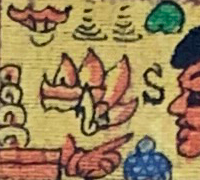 |
A circular shape representing cycles of emotional balance and inner peace. |
Saptawara: Redite (Sunday) Pancawara: Paing (Fierce) Caturwara: Sri (Fertility) Asatawara: Yama (God of Justice) Dasawara: Raja (King) Meaning: A day for emotional balance and reflection, supported by the fierce energy of Paing and the leadership of Raja guiding personal growth. |
| 114 | 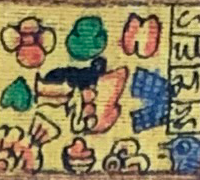 |
Sharp lines representing clarity and emotional strength. |
Saptawara: Soma (Monday) Pancawara: Pon (Rich) Caturwara: Laba (Gain) Asatawara: Guru (Teacher) Dasawara: Pandita (Priest) Meaning: A day for cultivating emotional clarity and patience, with richness (Pon) fostering emotional strength and Pandita offering wisdom. |
| 115 | 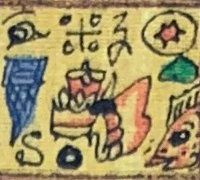 |
Flowing shapes suggesting adaptability and emotional flexibility. |
Saptawara: Anggara (Tuesday) Pancawara: Wage (Empty) Caturwara: Manuh (Follower) Asatawara: Ludra (God of Destruction) Dasawara: Manusa (Human) Meaning: A day for emotional flexibility and balance, with Wage’s emptiness creating space for inner peace and emotional renewal. |
| 116 | 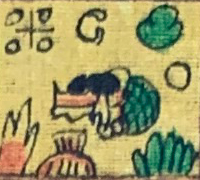 |
Solid structures representing spiritual grounding and emotional strength. |
Saptawara: Buda (Wednesday) Pancawara: Keliwon (Holy) Caturwara: Patra (Sacred) Asatawara: Guru (Teacher) Dasawara: Dewa (God) Meaning: A day for grounding spiritual practices, with Keliwon’s holiness supporting emotional stability and inner balance. |
| 117 | 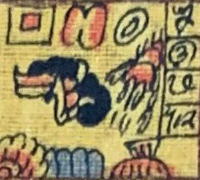 |
Flowing patterns representing flexibility and emotional adaptability. |
Saptawara: Wraspati (Thursday) Pancawara: Paing (Fierce) Caturwara: Laba (Gain) Asatawara: Yama (God of Justice) Dasawara: Pandita (Priest) Meaning: A day for adaptability in emotional balance, with Paing’s fierce energy fostering personal growth and balance in life’s challenges. |
| 118 | 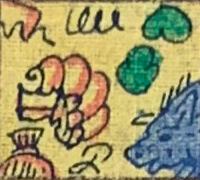 |
Flowing lines indicating flexibility and emotional renewal. |
Saptawara: Sukra (Friday) Pancawara: Pon (Rich) Caturwara: Sri (Fertility) Asatawara: Ludra (God of Destruction) Dasawara: Raja (King) Meaning: A day for emotional renewal and flexibility, supported by richness (Pon) and Ludra’s transformative energy. |
| 119 | 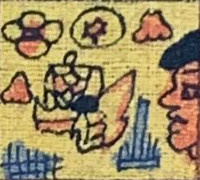 |
A closed design representing the completion of emotional cycles and renewal. |
Saptawara: Saniscara (Saturday) Pancawara: Wage (Empty) Caturwara: Jaya (Victory) Asatawara: Guru (Teacher) Dasawara: Manusa (Human) Meaning: A day for completing emotional cycles and fostering renewal, with Wage’s emptiness creating space for victory and inner strength. |
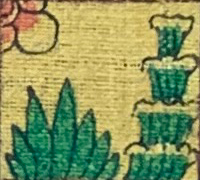
Pawukon Week 18 (Merakih) - Days 120 to 126
Week Summary
Week 18, called Merakih, focuses on renewal and spiritual reflection. The symbols of this week emphasize the importance of rejuvenating the soul, finding inner peace, and reconnecting with spiritual practices.
| Day # | Calendar|Symbol | Description | Related Calendar Information |
|---|---|---|---|
| 120 | 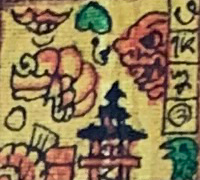 |
A circular shape representing cycles of renewal and spiritual reflection. |
Saptawara: Redite (Sunday) Pancawara: Paing (Fierce) Caturwara: Sri (Fertility) Asatawara: Yama (God of Justice) Dasawara: Raja (King) Meaning: A day for spiritual reflection and renewal, supported by Paing’s fierce energy and Raja’s leadership guiding inner growth. |
| 121 | 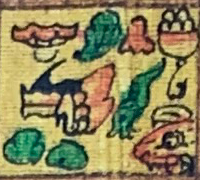 |
Sharp lines representing spiritual clarity and focus. |
Saptawara: Soma (Monday) Pancawara: Pon (Rich) Caturwara: Laba (Gain) Asatawara: Guru (Teacher) Dasawara: Pandita (Priest) Meaning: A day for gaining spiritual clarity and focus, supported by the richness of Pon and the wisdom of Pandita guiding spiritual growth. |
| 122 | 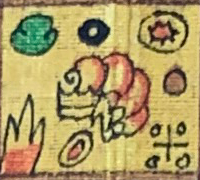 |
Flowing shapes suggesting adaptability and inner renewal. |
Saptawara: Anggara (Tuesday) Pancawara: Wage (Empty) Caturwara: Manuh (Follower) Asatawara: Ludra (God of Destruction) Dasawara: Manusa (Human) Meaning: A day for adaptability and renewal, with Wage’s emptiness offering space for reflection and Ludra’s transformative power guiding personal growth. |
| 123 | 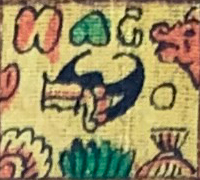 |
Solid shapes representing grounding and spiritual clarity. |
Saptawara: Buda (Wednesday) Pancawara: Keliwon (Holy) Caturwara: Patra (Sacred) Asatawara: Guru (Teacher) Dasawara: Dewa (God) Meaning: A day for grounding and clarity, with Keliwon’s holiness enhancing sacred practices and Patra’s guidance supporting spiritual balance. |
| 124 | 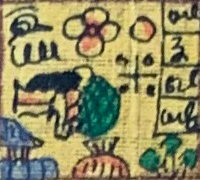 |
Flowing lines suggesting flexibility and spiritual reflection. |
Saptawara: Wraspati (Thursday) Pancawara: Paing (Fierce) Caturwara: Laba (Gain) Asatawara: Yama (God of Justice) Dasawara: Pandita (Priest) Meaning: A day for reflection and spiritual flexibility, with Paing’s fierce energy supporting spiritual growth and Yama guiding justice and balance. |
| 125 | 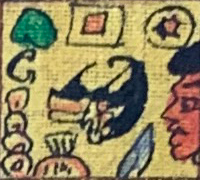 |
Flowing patterns representing emotional flexibility and personal reflection. |
Saptawara: Sukra (Friday) Pancawara: Pon (Rich) Caturwara: Sri (Fertility) Asatawara: Ludra (God of Destruction) Dasawara: Raja (King) Meaning: A day for emotional flexibility and reflection, with the richness of Pon supporting personal growth and Ludra’s energy transforming inner challenges. |
| 126 | 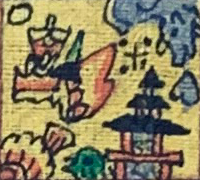 |
A closed design representing the completion of spiritual cycles and inner peace. |
Saptawara: Saniscara (Saturday) Pancawara: Wage (Empty) Caturwara: Jaya (Victory) Asatawara: Guru (Teacher) Dasawara: Manusa (Human) Meaning: A day for completing spiritual cycles, with Wage’s emptiness allowing space for reflection and Jaya’s energy guiding the way to victory and peace. |
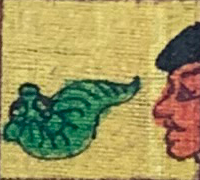
Pawukon Week 19 (Tambir) - Days 127 to 133
Week Summary
Week 19, called Tambir, is a week of transition and reflection. The symbols of this week invite personal growth through balancing opposing forces and finding harmony in life's dualities.
| Day # | Calendar|Symbol | Description | Related Calendar Information |
|---|---|---|---|
| 127 | 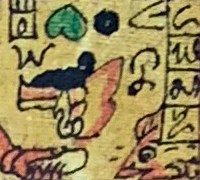 |
A circular shape representing cycles of balance and transition. |
Saptawara: Redite (Sunday) Pancawara: Paing (Fierce) Caturwara: Sri (Fertility) Asatawara: Yama (God of Justice) Dasawara: Raja (King) Meaning: A day for finding balance through transition, supported by the fierce energy of Paing and Raja’s leadership guiding inner strength. |
| 128 | 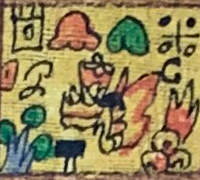 |
Sharp lines representing clarity and decisive action. |
Saptawara: Soma (Monday) Pancawara: Pon (Rich) Caturwara: Laba (Gain) Asatawara: Guru (Teacher) Dasawara: Pandita (Priest) Meaning: A day for decisive action and clarity, with the richness of Pon supporting personal success and Guru’s guidance ensuring wisdom in decisions. |
| 129 | 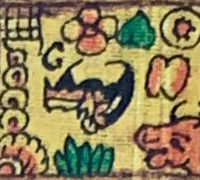 |
Flowing shapes suggesting adaptability and inner harmony. |
Saptawara: Anggara (Tuesday) Pancawara: Wage (Empty) Caturwara: Manuh (Follower) Asatawara: Ludra (God of Destruction) Dasawara: Manusa (Human) Meaning: A day for adaptability and harmony, with Wage’s emptiness offering space for inner reflection and Ludra’s transformative power guiding personal renewal. |
| 130 | 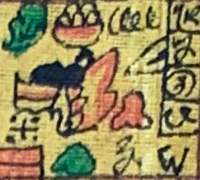 |
Solid shapes representing grounding and emotional clarity. |
Saptawara: Buda (Wednesday) Pancawara: Keliwon (Holy) Caturwara: Patra (Sacred) Asatawara: Guru (Teacher) Dasawara: Dewa (God) Meaning: A day for grounding and clarity, with Keliwon’s holiness guiding personal practices and Patra’s sacred energy supporting spiritual renewal. |
| 131 | 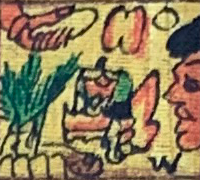 |
Flowing patterns representing flexibility and reflection. |
Saptawara: Wraspati (Thursday) Pancawara: Paing (Fierce) Caturwara: Laba (Gain) Asatawara: Yama (God of Justice) Dasawara: Pandita (Priest) Meaning: A day for reflection and flexibility, with Paing’s fierce energy supporting personal growth and Yama guiding justice and balance. |
| 132 | 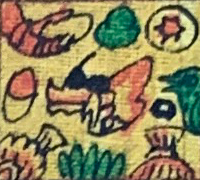 |
Flowing patterns indicating emotional flexibility and personal growth. |
Saptawara: Sukra (Friday) Pancawara: Pon (Rich) Caturwara: Sri (Fertility) Asatawara: Ludra (God of Destruction) Dasawara: Raja (King) Meaning: A day for emotional flexibility, with the richness of Pon fostering personal growth and Ludra’s transformative energy guiding balance. |
| 133 | 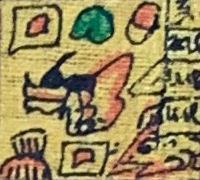 |
A closed design representing the completion of cycles and inner renewal. |
Saptawara: Saniscara (Saturday) Pancawara: Wage (Empty) Caturwara: Jaya (Victory) Asatawara: Guru (Teacher) Dasawara: Manusa (Human) Meaning: A day for completing cycles of reflection and fostering personal renewal, with Wage’s emptiness creating space for inner peace. |

Pawukon Week 20 (Medangkungan) - Days 134 to 140
Week Summary
Week 20, called Medangkungan, emphasizes spiritual alignment and growth. The symbols of this week encourage self-awareness, reflection, and seeking inner harmony to navigate life's complexities.
| Day # | Calendar|Symbol | Description | Related Calendar Information |
|---|---|---|---|
| 134 | 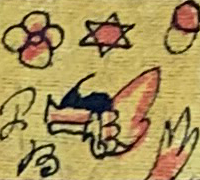 |
A circular shape representing cycles of spiritual alignment and renewal. |
Saptawara: Redite (Sunday) Pancawara: Paing (Fierce) Caturwara: Sri (Fertility) Asatawara: Yama (God of Justice) Dasawara: Raja (King) Meaning: A day for spiritual alignment and renewal, supported by the fierce energy of Paing and the leadership of Raja guiding inner growth. |
| 135 | 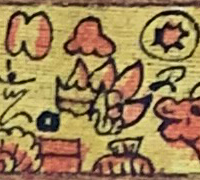 |
Sharp lines representing clarity and spiritual insight. |
Saptawara: Soma (Monday) Pancawara: Pon (Rich) Caturwara: Laba (Gain) Asatawara: Guru (Teacher) Dasawara: Pandita (Priest) Meaning: A day for gaining spiritual clarity, supported by Pon’s richness and Guru’s teachings guiding growth. |
| 136 | 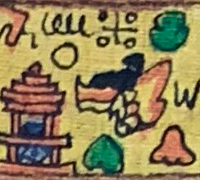 |
Flowing shapes suggesting adaptability and spiritual balance. |
Saptawara: Anggara (Tuesday) Pancawara: Wage (Empty) Caturwara: Manuh (Follower) Asatawara: Ludra (God of Destruction) Dasawara: Manusa (Human) Meaning: A day for adaptability and balance, with Wage’s emptiness allowing space for reflection and renewal, guided by Ludra’s transformative energy. |
| 137 | 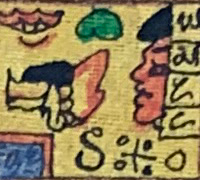 |
Solid shapes representing grounding and inner strength. |
Saptawara: Buda (Wednesday) Pancawara: Keliwon (Holy) Caturwara: Patra (Sacred) Asatawara: Guru (Teacher) Dasawara: Dewa (God) Meaning: A day for grounding spiritual practices, with Keliwon’s holy influence supporting inner strength and sacred rituals. |
| 138 | 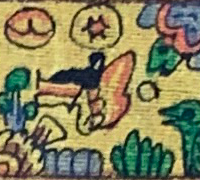 |
Flowing lines indicating flexibility and personal growth. |
Saptawara: Wraspati (Thursday) Pancawara: Paing (Fierce) Caturwara: Laba (Gain) Asatawara: Yama (God of Justice) Dasawara: Pandita (Priest) Meaning: A day for flexibility and personal growth, supported by Paing’s fierce energy and Yama’s justice guiding balance in life’s challenges. |
| 139 | 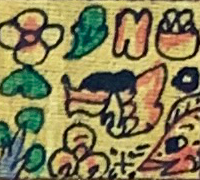 |
Flowing patterns representing emotional flexibility and renewal. |
Saptawara: Sukra (Friday) Pancawara: Pon (Rich) Caturwara: Sri (Fertility) Asatawara: Ludra (God of Destruction) Dasawara: Raja (King) Meaning: A day for emotional renewal and flexibility, supported by Pon’s richness and Ludra’s transformative power guiding balance. |
| 140 | 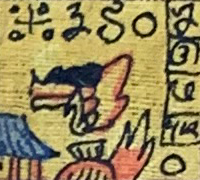 |
A closed design representing the completion of spiritual cycles and inner peace. |
Saptawara: Saniscara (Saturday) Pancawara: Wage (Empty) Caturwara: Jaya (Victory) Asatawara: Guru (Teacher) Dasawara: Manusa (Human) Meaning: A day for completing spiritual cycles, with Wage’s emptiness allowing space for reflection and Jaya’s victory guiding the way to peace and fulfillment. |

Pawukon Week 21 (Matal) - Days 141 to 147
Week Summary
Week 21, called Matal, represents a period of insight and inner reflection. The symbols of this week emphasize the importance of self-awareness and understanding, guiding personal growth through spiritual clarity.
| Day # | Calendar|Symbol | Description | Related Calendar Information |
|---|---|---|---|
| 141 | 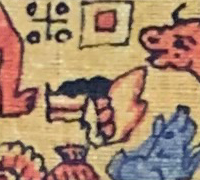 |
A circular shape representing cycles of inner reflection and insight. |
Saptawara: Redite (Sunday) Pancawara: Paing (Fierce) Caturwara: Sri (Fertility) Asatawara: Yama (God of Justice) Dasawara: Raja (King) Meaning: A day for inner reflection and spiritual clarity, supported by Paing’s fierce energy and Raja’s leadership guiding balance. |
| 142 | 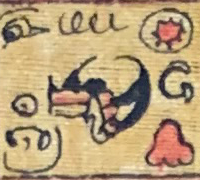 |
Sharp lines representing spiritual insight and focus. |
Saptawara: Soma (Monday) Pancawara: Pon (Rich) Caturwara: Laba (Gain) Asatawara: Guru (Teacher) Dasawara: Pandita (Priest) Meaning: A day for gaining spiritual insight, supported by Pon’s richness and Pandita’s teachings guiding focus and clarity. |
| 143 | 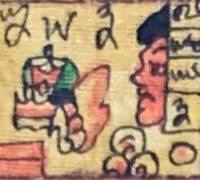 |
Flowing shapes suggesting adaptability and personal reflection. |
Saptawara: Anggara (Tuesday) Pancawara: Wage (Empty) Caturwara: Manuh (Follower) Asatawara: Ludra (God of Destruction) Dasawara: Manusa (Human) Meaning: A day for adaptability and reflection, with Wage’s emptiness offering space for inner peace and Ludra’s transformative energy guiding renewal. |
| 144 | 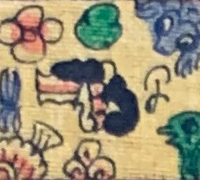 |
Solid shapes representing grounding and spiritual strength. |
Saptawara: Buda (Wednesday) Pancawara: Keliwon (Holy) Caturwara: Patra (Sacred) Asatawara: Guru (Teacher) Dasawara: Dewa (God) Meaning: A day for grounding spiritual practices, with Keliwon’s holiness fostering spiritual strength and balance. |
| 145 | 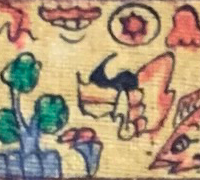 |
Flowing lines representing flexibility and spiritual reflection. |
Saptawara: Wraspati (Thursday) Pancawara: Paing (Fierce) Caturwara: Laba (Gain) Asatawara: Yama (God of Justice) Dasawara: Pandita (Priest) Meaning: A day for spiritual reflection and flexibility, supported by Paing’s fierce energy and Yama’s justice guiding balance. |
| 146 | 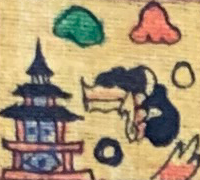 |
Flowing patterns indicating emotional adaptability and reflection. |
Saptawara: Sukra (Friday) Pancawara: Pon (Rich) Caturwara: Sri (Fertility) Asatawara: Ludra (God of Destruction) Dasawara: Raja (King) Meaning: A day for emotional adaptability, supported by Pon’s richness and Ludra’s transformative energy fostering personal growth. |
| 147 | 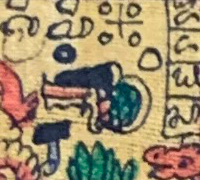 |
A closed design representing the completion of cycles and inner reflection. |
Saptawara: Saniscara (Saturday) Pancawara: Wage (Empty) Caturwara: Jaya (Victory) Asatawara: Guru (Teacher) Dasawara: Manusa (Human) Meaning: A day for completing cycles of reflection and renewal, with Wage’s emptiness fostering peace and clarity. |
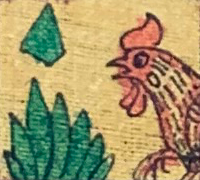
Pawukon Week 22 (Uye) - Days 148 to 154
Week Summary
Week 22, called Uye, focuses on transformation and adaptability. The symbols of this week reflect a journey of change, emphasizing personal growth through resilience and spiritual evolution.
| Day # | Calendar|Symbol | Description | Related Calendar Information |
|---|---|---|---|
| 148 | 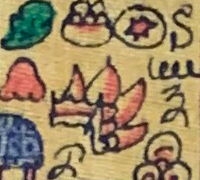 |
A circular shape representing cycles of transformation and renewal. |
Saptawara: Redite (Sunday) Pancawara: Paing (Fierce) Caturwara: Sri (Fertility) Asatawara: Yama (God of Justice) Dasawara: Raja (King) Meaning: A day for spiritual transformation and renewal, supported by the fierce energy of Paing and the leadership of Raja guiding personal growth. |
| 149 | 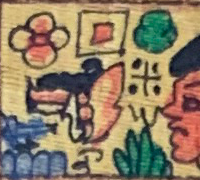 |
Sharp lines representing clarity and spiritual insight. |
Saptawara: Soma (Monday) Pancawara: Pon (Rich) Caturwara: Laba (Gain) Asatawara: Guru (Teacher) Dasawara: Pandita (Priest) Meaning: A day for gaining spiritual clarity, supported by Pon’s richness and Guru’s teachings guiding growth. |
| 150 | 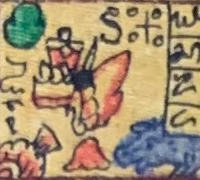 |
Flowing shapes suggesting adaptability and spiritual growth. |
Saptawara: Anggara (Tuesday) Pancawara: Wage (Empty) Caturwara: Manuh (Follower) Asatawara: Ludra (God of Destruction) Dasawara: Manusa (Human) Meaning: A day for adaptability and personal growth, with Wage’s emptiness offering space for spiritual reflection and Ludra’s transformative energy. |
| 151 | 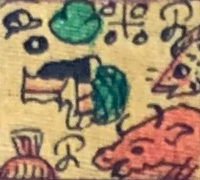 |
Solid shapes representing grounding and inner strength. |
Saptawara: Buda (Wednesday) Pancawara: Keliwon (Holy) Caturwara: Patra (Sacred) Asatawara: Guru (Teacher) Dasawara: Dewa (God) Meaning: A day for grounding and spiritual strength, supported by Keliwon’s holiness and Patra’s sacred guidance. |
| 152 | 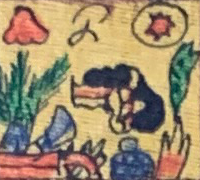 |
Flowing lines indicating flexibility and personal renewal. |
Saptawara: Wraspati (Thursday) Pancawara: Paing (Fierce) Caturwara: Laba (Gain) Asatawara: Yama (God of Justice) Dasawara: Pandita (Priest) Meaning: A day for flexibility and personal growth, supported by Paing’s fierce energy and Yama’s justice guiding balance. |
| 153 | 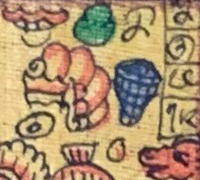 |
Flowing patterns representing emotional adaptability and renewal. |
Saptawara: Sukra (Friday) Pancawara: Pon (Rich) Caturwara: Sri (Fertility) Asatawara: Ludra (God of Destruction) Dasawara: Raja (King) Meaning: A day for emotional adaptability, with Pon’s richness and Ludra’s transformative energy fostering personal renewal. |
| 154 | 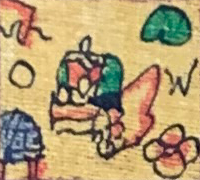 |
A closed design representing the completion of spiritual cycles and inner peace. |
Saptawara: Saniscara (Saturday) Pancawara: Wage (Empty) Caturwara: Jaya (Victory) Asatawara: Guru (Teacher) Dasawara: Manusa (Human) Meaning: A day for completing spiritual cycles, with Wage’s emptiness creating space for reflection and Jaya’s victory guiding the way to peace. |
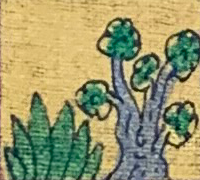
Pawukon Week 23 (Menail) - Days 155 to 161
Week Summary
Week 23, called Menail, centers on resilience and the development of personal strength. The symbols of this week emphasize the importance of persistence, adaptability, and finding stability amid life’s challenges.
| Day # | Calendar|Symbol | Description | Related Calendar Information |
|---|---|---|---|
| 155 | 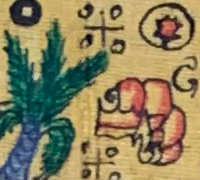 |
A circular shape representing cycles of resilience and personal strength. |
Saptawara: Redite (Sunday) Pancawara: Paing (Fierce) Caturwara: Sri (Fertility) Asatawara: Yama (God of Justice) Dasawara: Raja (King) Meaning: A day for developing personal strength, supported by the fierce energy of Paing and the leadership of Raja guiding inner resilience. |
| 156 | 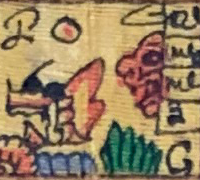 |
Sharp lines representing clarity and mental focus. |
Saptawara: Soma (Monday) Pancawara: Pon (Rich) Caturwara: Laba (Gain) Asatawara: Guru (Teacher) Dasawara: Pandita (Priest) Meaning: A day for mental focus and clarity, supported by Pon’s richness and Guru’s wisdom guiding personal development. |
| 157 | 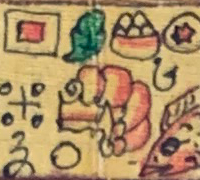 |
Flowing shapes suggesting adaptability and emotional strength. |
Saptawara: Anggara (Tuesday) Pancawara: Wage (Empty) Caturwara: Manuh (Follower) Asatawara: Ludra (God of Destruction) Dasawara: Manusa (Human) Meaning: A day for adaptability and emotional strength, with Wage’s emptiness offering space for reflection and Ludra’s transformative power guiding growth. |
| 158 | 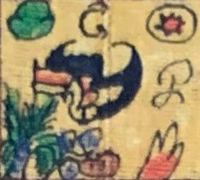 |
Solid shapes representing grounding and resilience. |
Saptawara: Buda (Wednesday) Pancawara: Keliwon (Holy) Caturwara: Patra (Sacred) Asatawara: Guru (Teacher) Dasawara: Dewa (God) Meaning: A day for grounding and resilience, supported by Keliwon’s holiness and Patra’s sacred influence guiding strength. |
| 159 | 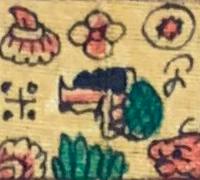 |
Flowing lines indicating flexibility and personal growth. |
Saptawara: Wraspati (Thursday) Pancawara: Paing (Fierce) Caturwara: Laba (Gain) Asatawara: Yama (God of Justice) Dasawara: Pandita (Priest) Meaning: A day for flexibility and personal growth, supported by Paing’s fierce energy and Yama’s guidance balancing inner strength. |
| 160 | 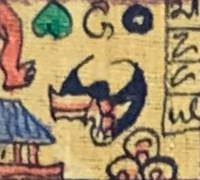 |
Flowing patterns representing emotional flexibility and renewal. |
Saptawara: Sukra (Friday) Pancawara: Pon (Rich) Caturwara: Sri (Fertility) Asatawara: Ludra (God of Destruction) Dasawara: Raja (King) Meaning: A day for emotional flexibility and renewal, with Pon’s richness supporting personal growth and Ludra’s transformative energy. |
| 161 | 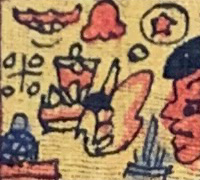 |
A closed design representing the completion of personal cycles and renewal. |
Saptawara: Saniscara (Saturday) Pancawara: Wage (Empty) Caturwara: Jaya (Victory) Asatawara: Guru (Teacher) Dasawara: Manusa (Human) Meaning: A day for completing personal cycles of renewal, with Wage’s emptiness creating space for inner reflection and Jaya’s influence guiding growth. |
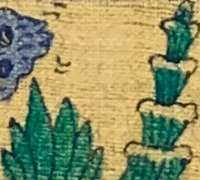
Pawukon Week 24 (Parangbakat) - Days 162 to 168
Week Summary
Week 24, called Parangbakat, focuses on the strength of perseverance and determination. The symbols of this week represent the power of unwavering effort, guiding personal growth through resilience and stability.
| Day # | Calendar|Symbol | Description | Related Calendar Information |
|---|---|---|---|
| 162 | 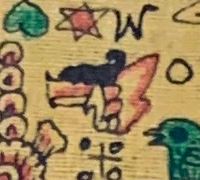 |
A circular shape representing cycles of perseverance and resilience. |
Saptawara: Redite (Sunday) Pancawara: Paing (Fierce) Caturwara: Sri (Fertility) Asatawara: Yama (God of Justice) Dasawara: Raja (King) Meaning: A day for building resilience and strength, supported by the fierce energy of Paing and the leadership of Raja guiding growth. |
| 163 | 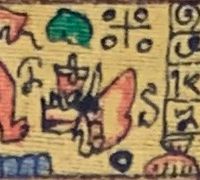 |
Sharp lines representing determination and clarity. |
Saptawara: Soma (Monday) Pancawara: Pon (Rich) Caturwara: Laba (Gain) Asatawara: Guru (Teacher) Dasawara: Pandita (Priest) Meaning: A day for fostering determination and clarity, with Pon’s richness and Guru’s wisdom guiding personal growth. |
| 164 | 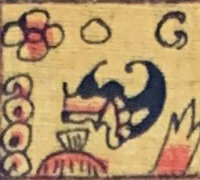 |
Flowing shapes suggesting adaptability and emotional strength. |
Saptawara: Anggara (Tuesday) Pancawara: Wage (Empty) Caturwara: Manuh (Follower) Asatawara: Ludra (God of Destruction) Dasawara: Manusa (Human) Meaning: A day for adaptability and emotional resilience, with Wage’s emptiness offering space for reflection and Ludra’s transformative power guiding renewal. |
| 165 | 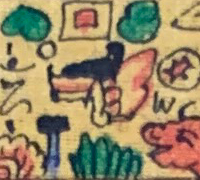 |
Solid shapes representing grounding and determination. |
Saptawara: Buda (Wednesday) Pancawara: Keliwon (Holy) Caturwara: Patra (Sacred) Asatawara: Guru (Teacher) Dasawara: Dewa (God) Meaning: A day for grounding and spiritual strength, supported by Keliwon’s holiness and Patra’s sacred guidance fostering personal growth. |
| 166 | 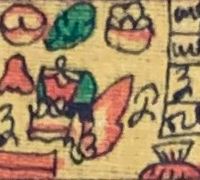 |
Flowing lines indicating flexibility and persistence. |
Saptawara: Wraspati (Thursday) Pancawara: Paing (Fierce) Caturwara: Laba (Gain) Asatawara: Yama (God of Justice) Dasawara: Pandita (Priest) Meaning: A day for flexibility and persistence, supported by Paing’s fierce energy and Yama’s justice guiding stability and growth. |
| 167 | 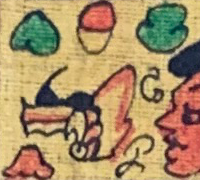 |
Flowing patterns representing emotional resilience and renewal. |
Saptawara: Sukra (Friday) Pancawara: Pon (Rich) Caturwara: Sri (Fertility) Asatawara: Ludra (God of Destruction) Dasawara: Raja (King) Meaning: A day for emotional resilience, with Pon’s richness fostering growth and Ludra’s transformative energy guiding personal renewal. |
| 168 | 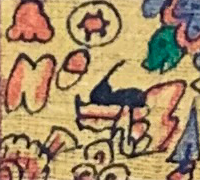 |
A closed design representing the completion of personal cycles and persistence. |
Saptawara: Saniscara (Saturday) Pancawara: Wage (Empty) Caturwara: Jaya (Victory) Asatawara: Guru (Teacher) Dasawara: Manusa (Human) Meaning: A day for completing cycles of persistence, with Wage’s emptiness allowing space for renewal and Jaya’s influence guiding strength. |
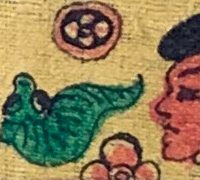
Pawukon Week 25 (Bala) - Days 169 to 175
Week Summary
Week 25, called Bala, represents strength and protection. The symbols of this week emphasize the importance of personal power, safeguarding oneself and others, and resilience in the face of challenges.
| Day # | Calendar|Symbol | Description | Related Calendar Information |
|---|---|---|---|
| 169 | 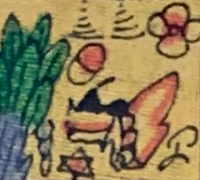 |
A circular shape representing cycles of strength and protection. |
Saptawara: Redite (Sunday) Pancawara: Paing (Fierce) Caturwara: Sri (Fertility) Asatawara: Yama (God of Justice) Dasawara: Raja (King) Meaning: A day for building strength and personal power, supported by Paing’s fierce energy and Raja’s leadership guiding protection and growth. |
| 170 | 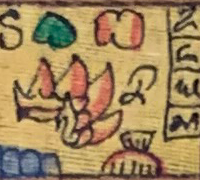 |
Sharp lines representing clarity and protective energy. |
Saptawara: Soma (Monday) Pancawara: Pon (Rich) Caturwara: Laba (Gain) Asatawara: Guru (Teacher) Dasawara: Pandita (Priest) Meaning: A day for fostering clarity and protection, with Pon’s richness and Guru’s wisdom guiding personal strength. |
| 171 | 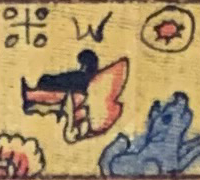 |
Flowing shapes suggesting adaptability and protective strength. |
Saptawara: Anggara (Tuesday) Pancawara: Wage (Empty) Caturwara: Manuh (Follower) Asatawara: Ludra (God of Destruction) Dasawara: Manusa (Human) Meaning: A day for adaptability and protection, with Wage’s emptiness offering space for reflection and Ludra’s transformative power guiding inner resilience. |
| 172 | 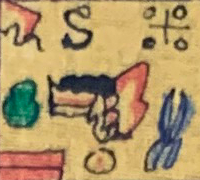 |
Solid shapes representing grounding and protective energy. |
Saptawara: Buda (Wednesday) Pancawara: Keliwon (Holy) Caturwara: Patra (Sacred) Asatawara: Guru (Teacher) Dasawara: Dewa (God) Meaning: A day for grounding and protection, supported by Keliwon’s holiness and Patra’s sacred influence guiding spiritual strength. |
| 173 | 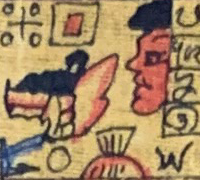 |
Flowing lines indicating flexibility and inner protection. |
Saptawara: Wraspati (Thursday) Pancawara: Paing (Fierce) Caturwara: Laba (Gain) Asatawara: Yama (God of Justice) Dasawara: Pandita (Priest) Meaning: A day for flexibility and protection, supported by Paing’s fierce energy and Yama’s justice guiding stability and growth. |
| 174 | 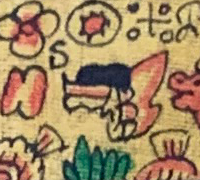 |
Flowing patterns representing emotional resilience and protective energy. |
Saptawara: Sukra (Friday) Pancawara: Pon (Rich) Caturwara: Sri (Fertility) Asatawara: Ludra (God of Destruction) Dasawara: Raja (King) Meaning: A day for emotional resilience and protection, with Pon’s richness fostering personal growth and Ludra’s transformative energy guiding strength. |
| 175 | 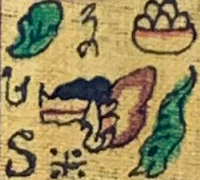 |
A closed design representing the completion of protective cycles and personal growth. |
Saptawara: Saniscara (Saturday) Pancawara: Wage (Empty) Caturwara: Jaya (Victory) Asatawara: Guru (Teacher) Dasawara: Manusa (Human) Meaning: A day for completing cycles of protection and personal growth, with Wage’s emptiness allowing space for renewal and Jaya’s influence guiding resilience. |
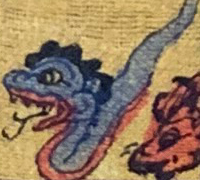
Pawukon Week 26 (Ugu) - Days 176 to 182
Week Summary
Week 26, called Ugu, focuses on cycles of transformation and growth. The symbols of this week represent inner renewal and spiritual evolution, guiding personal progress through resilience and adaptability.
| Day # | Calendar|Symbol | Description | Related Calendar Information |
|---|---|---|---|
| 176 | 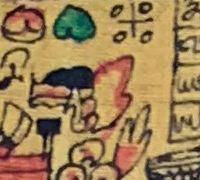 |
A circular shape representing cycles of transformation and growth. |
Saptawara: Redite (Sunday) Pancawara: Paing (Fierce) Caturwara: Sri (Fertility) Asatawara: Yama (God of Justice) Dasawara: Raja (King) Meaning: A day for spiritual transformation and growth, supported by Paing’s fierce energy and the leadership of Raja guiding inner resilience. |
| 177 | 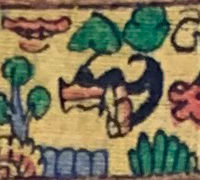 |
Sharp lines representing clarity and insight. |
Saptawara: Soma (Monday) Pancawara: Pon (Rich) Caturwara: Laba (Gain) Asatawara: Guru (Teacher) Dasawara: Pandita (Priest) Meaning: A day for gaining spiritual clarity and insight, with Pon’s richness and Guru’s wisdom guiding personal growth. |
| 178 | 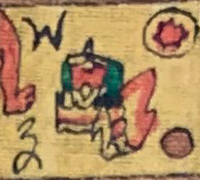 |
Flowing shapes suggesting adaptability and spiritual evolution. |
Saptawara: Anggara (Tuesday) Pancawara: Wage (Empty) Caturwara: Manuh (Follower) Asatawara: Ludra (God of Destruction) Dasawara: Manusa (Human) Meaning: A day for adaptability and inner evolution, with Wage’s emptiness offering space for spiritual reflection and Ludra’s transformative energy. |
| 179 | 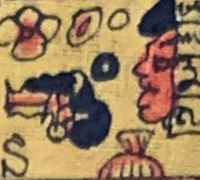 |
Solid shapes representing grounding and spiritual strength. |
Saptawara: Buda (Wednesday) Pancawara: Keliwon (Holy) Caturwara: Patra (Sacred) Asatawara: Guru (Teacher) Dasawara: Dewa (God) Meaning: A day for grounding and spiritual strength, with Keliwon’s holiness guiding inner balance and Patra’s sacred energy supporting growth. |
| 180 | 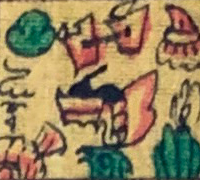 |
Flowing lines indicating flexibility and spiritual renewal. |
Saptawara: Wraspati (Thursday) Pancawara: Paing (Fierce) Caturwara: Laba (Gain) Asatawara: Yama (God of Justice) Dasawara: Pandita (Priest) Meaning: A day for flexibility and spiritual renewal, supported by Paing’s fierce energy and Yama’s guidance balancing personal growth. |
| 181 | 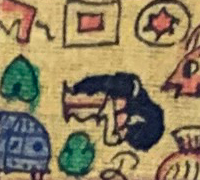 |
Flowing patterns representing emotional flexibility and personal evolution. |
Saptawara: Sukra (Friday) Pancawara: Pon (Rich) Caturwara: Sri (Fertility) Asatawara: Ludra (God of Destruction) Dasawara: Raja (King) Meaning: A day for emotional flexibility and personal evolution, with Pon’s richness fostering growth and Ludra’s transformative energy guiding renewal. |
| 182 | 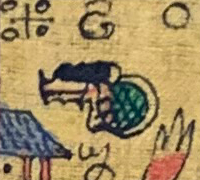 |
A closed design representing the completion of spiritual cycles and renewal. |
Saptawara: Saniscara (Saturday) Pancawara: Wage (Empty) Caturwara: Jaya (Victory) Asatawara: Guru (Teacher) Dasawara: Manusa (Human) Meaning: A day for completing cycles of spiritual reflection and renewal, with Wage’s emptiness allowing space for inner peace and Jaya’s victory guiding strength. |
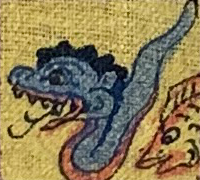
Pawukon Week 27 (Wayang) - Days 183 to 189
Week Summary
Week 27, called Wayang, represents cycles of self-discovery and spiritual revelation. The symbols of this week emphasize the unveiling of deeper truths, guiding personal evolution through insight and inner reflection.
| Day # | Calendar|Symbol | Description | Related Calendar Information |
|---|---|---|---|
| 183 | 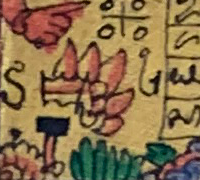 |
A circular shape representing cycles of self-discovery and revelation. |
Saptawara: Redite (Sunday) Pancawara: Paing (Fierce) Caturwara: Sri (Fertility) Asatawara: Yama (God of Justice) Dasawara: Raja (King) Meaning: A day for discovering deeper truths, supported by Paing’s fierce energy and Raja’s leadership guiding inner strength. |
| 184 | 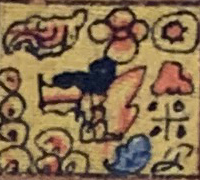 |
Sharp lines representing clarity and spiritual revelation. |
Saptawara: Soma (Monday) Pancawara: Pon (Rich) Caturwara: Laba (Gain) Asatawara: Guru (Teacher) Dasawara: Pandita (Priest) Meaning: A day for gaining clarity and spiritual insight, supported by Pon’s richness and Guru’s wisdom guiding personal growth. |
| 185 | 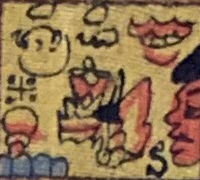 |
Flowing shapes suggesting adaptability and self-reflection. |
Saptawara: Anggara (Tuesday) Pancawara: Wage (Empty) Caturwara: Manuh (Follower) Asatawara: Ludra (God of Destruction) Dasawara: Manusa (Human) Meaning: A day for adaptability and self-reflection, with Wage’s emptiness offering space for inner clarity and Ludra’s transformative energy guiding renewal. |
| 186 | 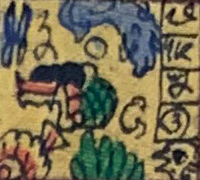 |
Solid shapes representing grounding and spiritual revelation. |
Saptawara: Buda (Wednesday) Pancawara: Keliwon (Holy) Caturwara: Patra (Sacred) Asatawara: Guru (Teacher) Dasawara: Dewa (God) Meaning: A day for grounding spiritual insight, supported by Keliwon’s holiness and Patra’s sacred energy guiding clarity. |
| 187 | 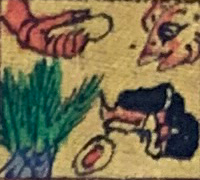 |
Flowing lines indicating flexibility and personal discovery. |
Saptawara: Wraspati (Thursday) Pancawara: Paing (Fierce) Caturwara: Laba (Gain) Asatawara: Yama (God of Justice) Dasawara: Pandita (Priest) Meaning: A day for flexibility and personal growth, supported by Paing’s fierce energy and Yama’s justice guiding insight. |
| 188 | 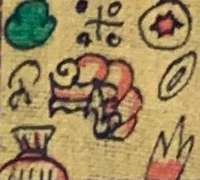 |
Flowing patterns representing emotional adaptability and personal evolution. |
Saptawara: Sukra (Friday) Pancawara: Pon (Rich) Caturwara: Sri (Fertility) Asatawara: Ludra (God of Destruction) Dasawara: Raja (King) Meaning: A day for emotional adaptability and personal evolution, with Pon’s richness fostering growth and Ludra’s transformative energy guiding renewal. |
| 189 | 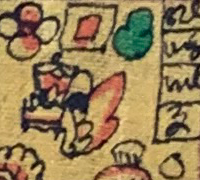 |
A closed design representing the completion of cycles of self-discovery and spiritual clarity. |
Saptawara: Saniscara (Saturday) Pancawara: Wage (Empty) Caturwara: Jaya (Victory) Asatawara: Guru (Teacher) Dasawara: Manusa (Human) Meaning: A day for completing cycles of self-discovery, with Wage’s emptiness creating space for personal clarity and Jaya’s influence guiding strength. |
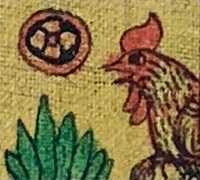
Pawukon Week 28 (Kelawu) - Days 190 to 196
Week Summary
Week 28, called Kelawu, focuses on transitions and renewal. The symbols of this week emphasize change and the importance of adapting to new phases in life, guiding personal growth through flexibility and transformation.
| Day # | Calendar|Symbol | Description | Related Calendar Information |
|---|---|---|---|
| 190 | 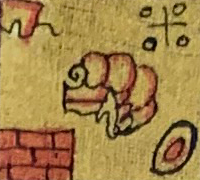 |
A circular shape representing cycles of transition and renewal. |
Saptawara: Redite (Sunday) Pancawara: Paing (Fierce) Caturwara: Sri (Fertility) Asatawara: Yama (God of Justice) Dasawara: Raja (King) Meaning: A day for embracing transitions, supported by Paing’s fierce energy and Raja’s leadership guiding personal growth. |
| 191 | 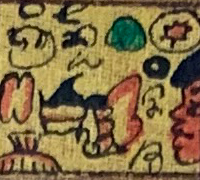 |
Sharp lines representing clarity and the acceptance of change. |
Saptawara: Soma (Monday) Pancawara: Pon (Rich) Caturwara: Laba (Gain) Asatawara: Guru (Teacher) Dasawara: Pandita (Priest) Meaning: A day for finding clarity in transitions, supported by Pon’s richness and Guru’s wisdom guiding adaptability and renewal. |
| 192 | 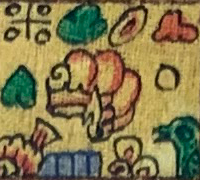 |
Flowing shapes suggesting adaptability and emotional renewal. |
Saptawara: Anggara (Tuesday) Pancawara: Wage (Empty) Caturwara: Manuh (Follower) Asatawara: Ludra (God of Destruction) Dasawara: Manusa (Human) Meaning: A day for adaptability and emotional renewal, with Wage’s emptiness offering space for reflection and Ludra’s transformative energy guiding change. |
| 193 | 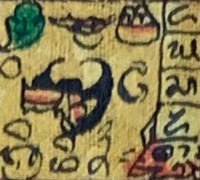 |
Solid shapes representing grounding and strength during transitions. |
Saptawara: Buda (Wednesday) Pancawara: Keliwon (Holy) Caturwara: Patra (Sacred) Asatawara: Guru (Teacher) Dasawara: Dewa (God) Meaning: A day for grounding and strength during life transitions, supported by Keliwon’s holiness and Patra’s sacred energy guiding personal growth. |
| 194 | 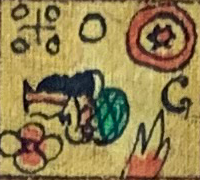 |
Flowing lines indicating flexibility and emotional balance during change. |
Saptawara: Wraspati (Thursday) Pancawara: Paing (Fierce) Caturwara: Laba (Gain) Asatawara: Yama (God of Justice) Dasawara: Pandita (Priest) Meaning: A day for flexibility and emotional balance, supported by Paing’s fierce energy and Yama’s guidance fostering stability in transitions. |
| 195 | 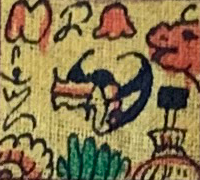 |
Flowing patterns representing emotional resilience and personal growth during transitions. |
Saptawara: Sukra (Friday) Pancawara: Pon (Rich) Caturwara: Sri (Fertility) Asatawara: Ludra (God of Destruction) Dasawara: Raja (King) Meaning: A day for emotional resilience and personal growth, supported by Pon’s richness and Ludra’s transformative energy guiding transitions. |
| 196 | 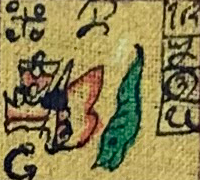 |
A closed design representing the completion of cycles of transition and renewal. |
Saptawara: Saniscara (Saturday) Pancawara: Wage (Empty) Caturwara: Jaya (Victory) Asatawara: Guru (Teacher) Dasawara: Manusa (Human) Meaning: A day for completing cycles of transition and renewal, with Wage’s emptiness creating space for reflection and Jaya’s influence guiding strength and clarity. |
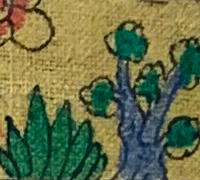
Pawukon Week 29 (Dukut) - Days 197 to 203
Week Summary
Week 29, called Dukut, centers on healing and restoration. The symbols of this week emphasize personal renewal, guiding emotional and spiritual healing through resilience and clarity.
| Day # | Calendar|Symbol | Description | Related Calendar Information |
|---|---|---|---|
| 197 | 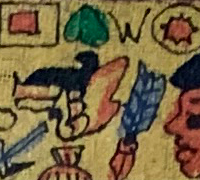 |
A circular shape representing cycles of healing and restoration. |
Saptawara: Redite (Sunday) Pancawara: Paing (Fierce) Caturwara: Sri (Fertility) Asatawara: Yama (God of Justice) Dasawara: Raja (King) Meaning: A day for healing and personal restoration, supported by Paing’s fierce energy and Raja’s leadership guiding strength. |
| 198 | 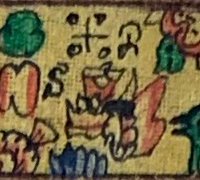 |
Sharp lines representing clarity and emotional balance. |
Saptawara: Soma (Monday) Pancawara: Pon (Rich) Caturwara: Laba (Gain) Asatawara: Guru (Teacher) Dasawara: Pandita (Priest) Meaning: A day for gaining clarity and emotional balance, with Pon’s richness and Guru’s wisdom guiding personal healing. |
| 199 | 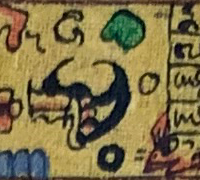 |
Flowing shapes suggesting adaptability and spiritual healing. |
Saptawara: Anggara (Tuesday) Pancawara: Wage (Empty) Caturwara: Manuh (Follower) Asatawara: Ludra (God of Destruction) Dasawara: Manusa (Human) Meaning: A day for adaptability and spiritual healing, with Wage’s emptiness offering space for reflection and Ludra’s transformative power guiding renewal. |
| 200 | 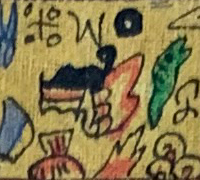 |
Solid shapes representing grounding and emotional healing. |
Saptawara: Buda (Wednesday) Pancawara: Keliwon (Holy) Caturwara: Patra (Sacred) Asatawara: Guru (Teacher) Dasawara: Dewa (God) Meaning: A day for grounding and emotional healing, supported by Keliwon’s holiness and Patra’s sacred energy guiding restoration. |
| 201 | 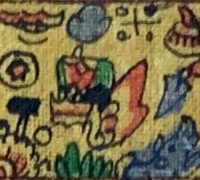 |
Flowing lines indicating flexibility and spiritual renewal. |
Saptawara: Wraspati (Thursday) Pancawara: Paing (Fierce) Caturwara: Laba (Gain) Asatawara: Yama (God of Justice) Dasawara: Pandita (Priest) Meaning: A day for flexibility and spiritual healing, supported by Paing’s fierce energy and Yama’s justice guiding stability. |
| 202 | 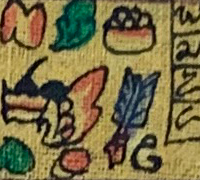 |
Flowing patterns representing emotional resilience and personal healing. |
Saptawara: Sukra (Friday) Pancawara: Pon (Rich) Caturwara: Sri (Fertility) Asatawara: Ludra (God of Destruction) Dasawara: Raja (King) Meaning: A day for emotional resilience and personal healing, supported by Pon’s richness and Ludra’s transformative energy guiding growth. |
| 203 | 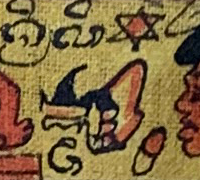 |
A closed design representing the completion of cycles of healing and restoration. |
Saptawara: Saniscara (Saturday) Pancawara: Wage (Empty) Caturwara: Jaya (Victory) Asatawara: Guru (Teacher) Dasawara: Manusa (Human) Meaning: A day for completing cycles of healing and renewal, with Wage’s emptiness creating space for reflection and Jaya’s victory guiding restoration. |
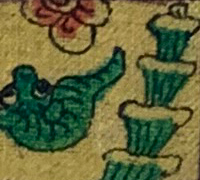
Pawukon Week 30 (Watugunung) - Days 204 to 210
Week Summary
Week 30, called Watugunung, represents completion and wisdom. The symbols of this week emphasize cycles coming to a close, guiding reflection, clarity, and the accumulation of knowledge through experience.
| Day # | Calendar|Symbol | Description | Related Calendar Information |
|---|---|---|---|
| 204 | 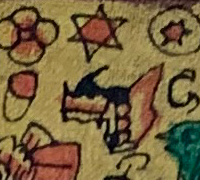 |
A circular shape representing cycles of completion and wisdom. |
Saptawara: Redite (Sunday) Pancawara: Paing (Fierce) Caturwara: Sri (Fertility) Asatawara: Yama (God of Justice) Dasawara: Raja (King) Meaning: A day for completion, with Paing’s fierce energy and Raja’s wisdom guiding the conclusion of cycles and the gathering of insight. |
| 205 | 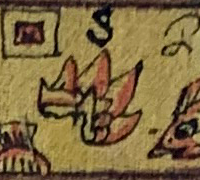 |
Sharp lines representing clarity and the end of cycles. |
Saptawara: Soma (Monday) Pancawara: Pon (Rich) Caturwara: Laba (Gain) Asatawara: Guru (Teacher) Dasawara: Pandita (Priest) Meaning: A day for clarity in completing cycles, supported by Pon’s richness and Guru’s wisdom guiding reflection and insight. |
| 206 | 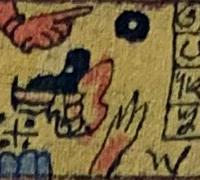 |
Flowing shapes suggesting adaptability and closing cycles of experience. |
Saptawara: Anggara (Tuesday) Pancawara: Wage (Empty) Caturwara: Manuh (Follower) Asatawara: Ludra (God of Destruction) Dasawara: Manusa (Human) Meaning: A day for adaptability in closing cycles, with Wage’s emptiness offering space for reflection and Ludra’s energy guiding renewal. |
| 207 | 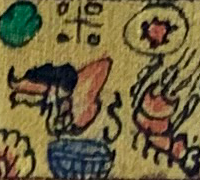 |
Solid shapes representing grounding and wisdom as cycles close. |
Saptawara: Buda (Wednesday) Pancawara: Keliwon (Holy) Caturwara: Patra (Sacred) Asatawara: Guru (Teacher) Dasawara: Dewa (God) Meaning: A day for grounding and the gathering of wisdom as cycles close, supported by Keliwon’s holiness and Patra’s sacred energy. |
| 208 | 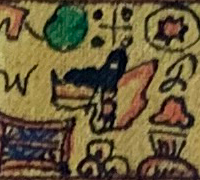 |
Flowing lines indicating flexibility and the accumulation of insight. |
Saptawara: Wraspati (Thursday) Pancawara: Paing (Fierce) Caturwara: Laba (Gain) Asatawara: Yama (God of Justice) Dasawara: Pandita (Priest) Meaning: A day for flexibility and the accumulation of insight, supported by Paing’s fierce energy and Yama’s guidance of justice in reflection. |
| 209 | 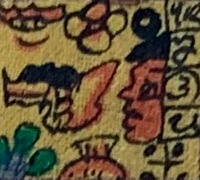 |
Flowing patterns representing emotional resilience and the completion of cycles. |
Saptawara: Sukra (Friday) Pancawara: Pon (Rich) Caturwara: Sri (Fertility) Asatawara: Ludra (God of Destruction) Dasawara: Raja (King) Meaning: A day for emotional resilience and the conclusion of cycles, with Pon’s richness and Ludra’s transformative energy guiding growth. |
| 210 | 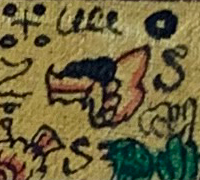 |
A closed design representing the completion of cycles and the gathering of wisdom. |
Saptawara: Saniscara (Saturday) Pancawara: Wage (Empty) Caturwara: Jaya (Victory) Asatawara: Guru (Teacher) Dasawara: Manusa (Human) Meaning: A day for concluding cycles with wisdom, supported by Wage’s emptiness creating space for reflection and Jaya’s victory guiding the completion. |
